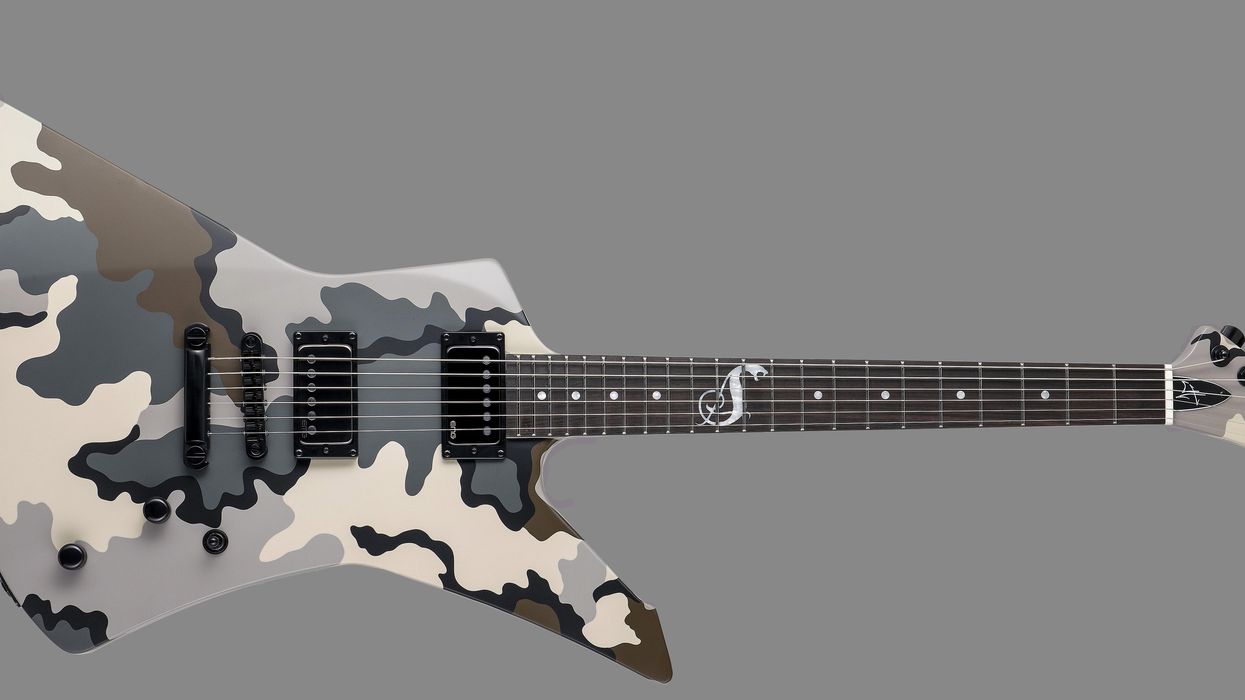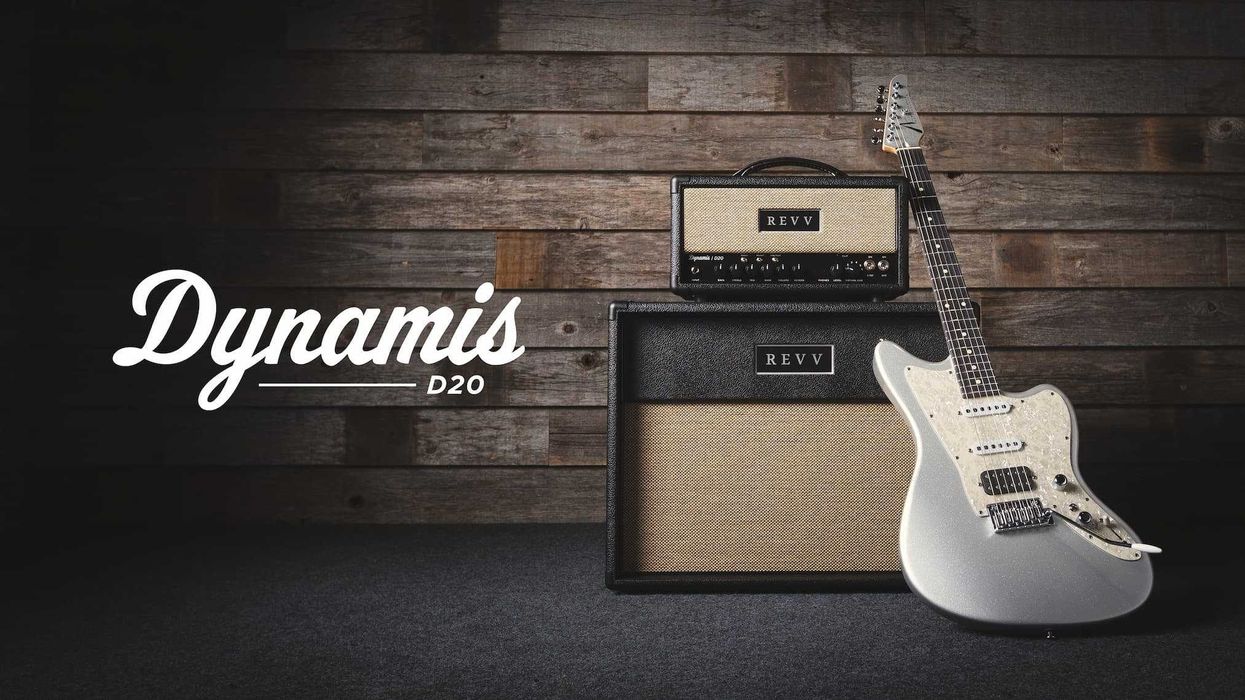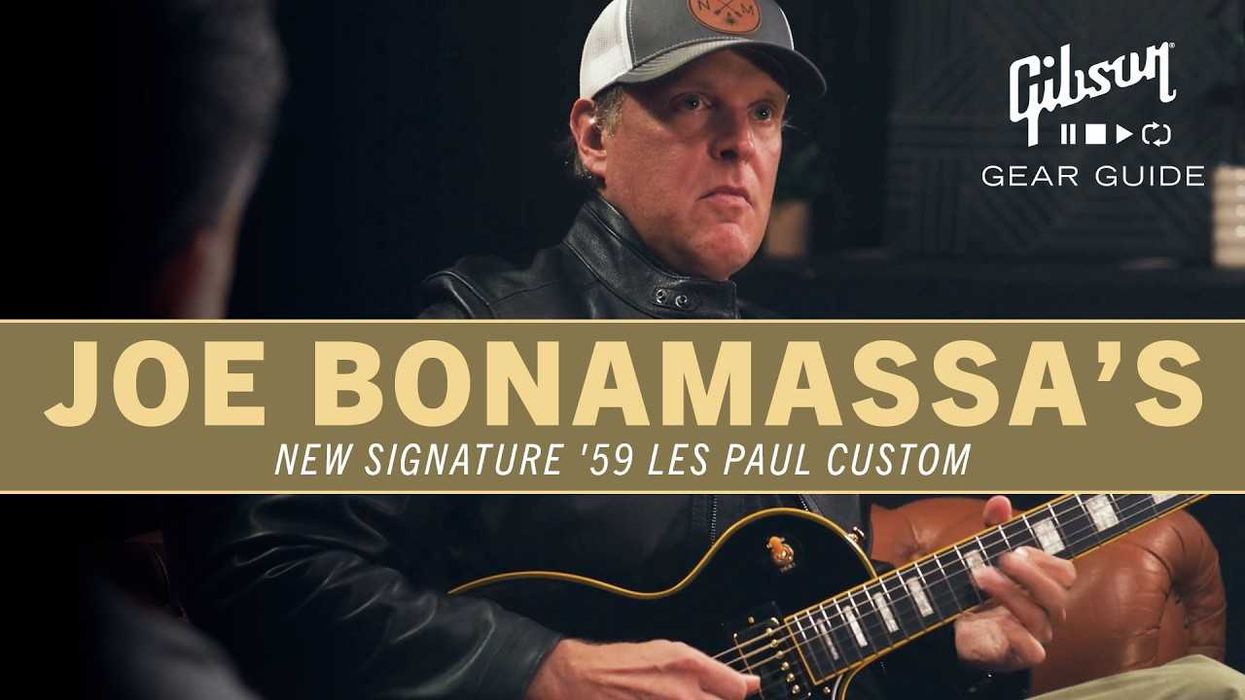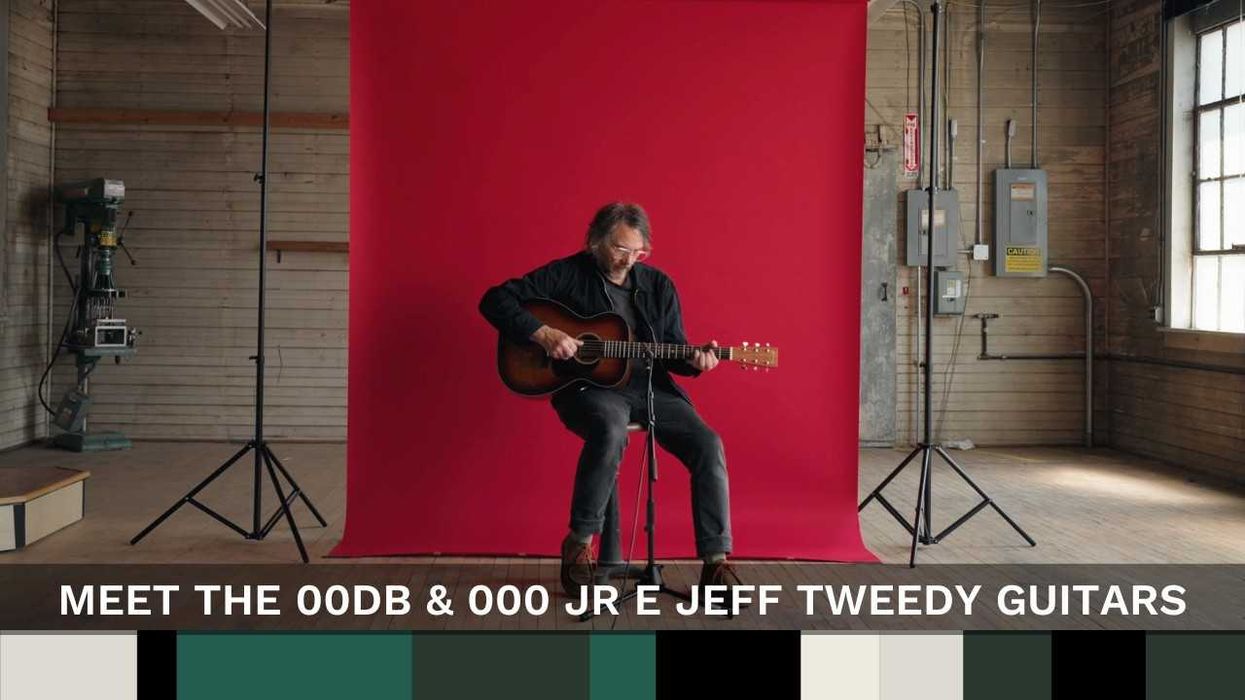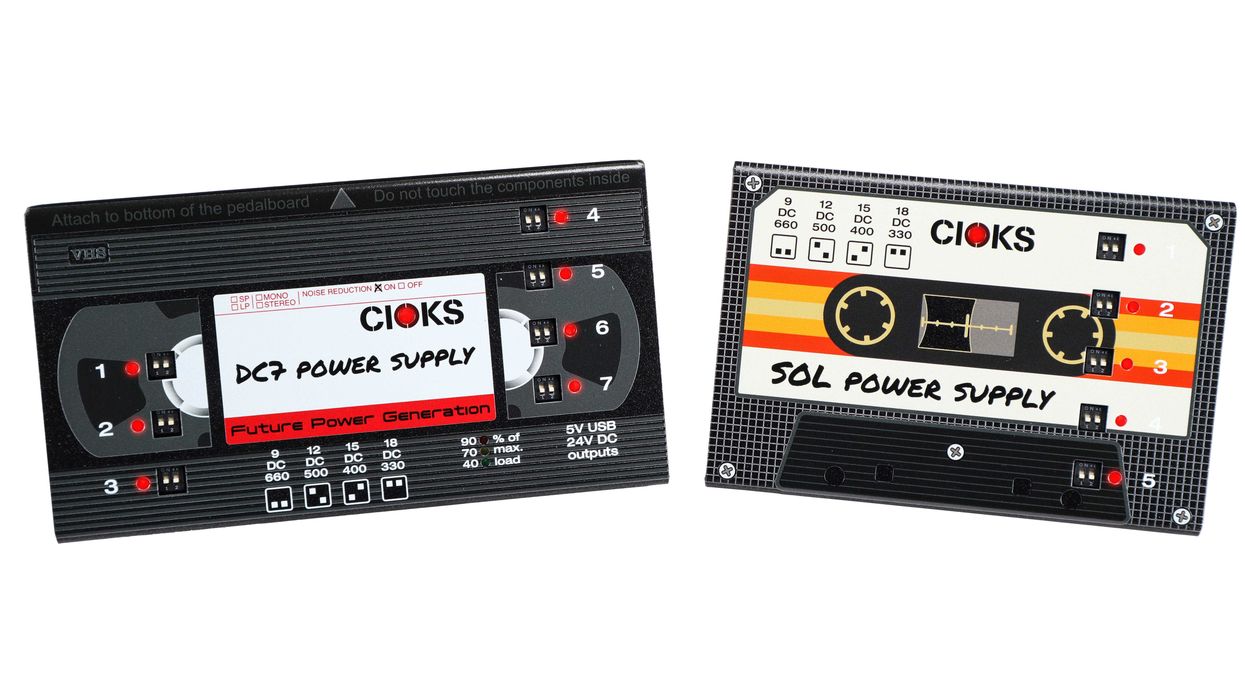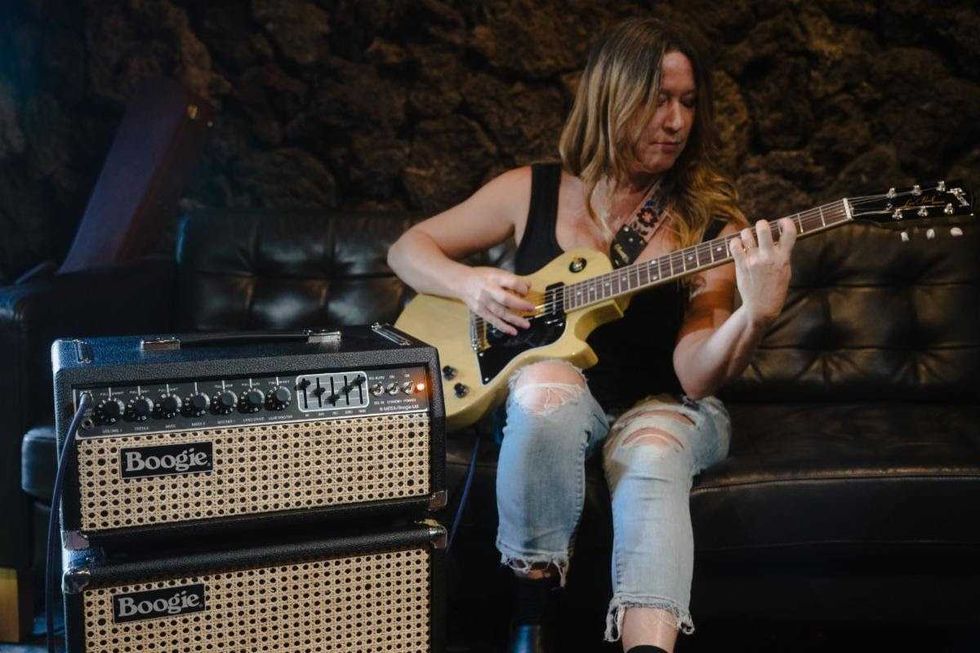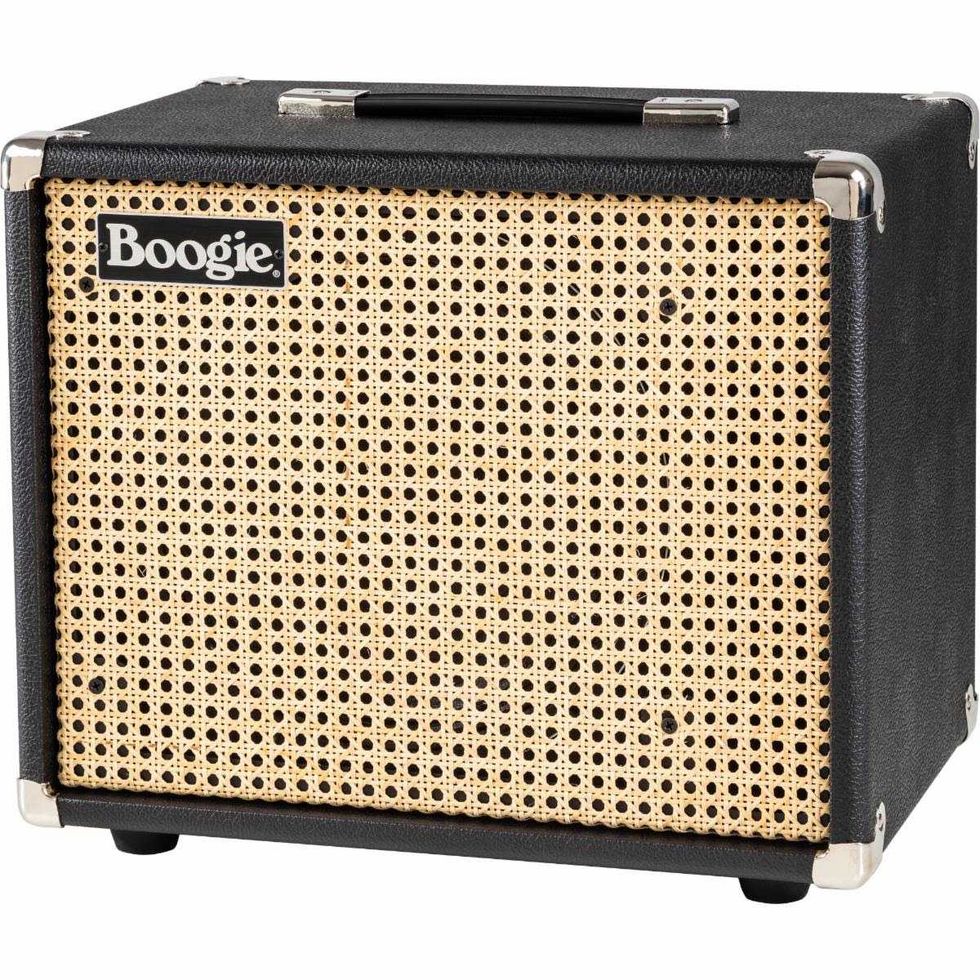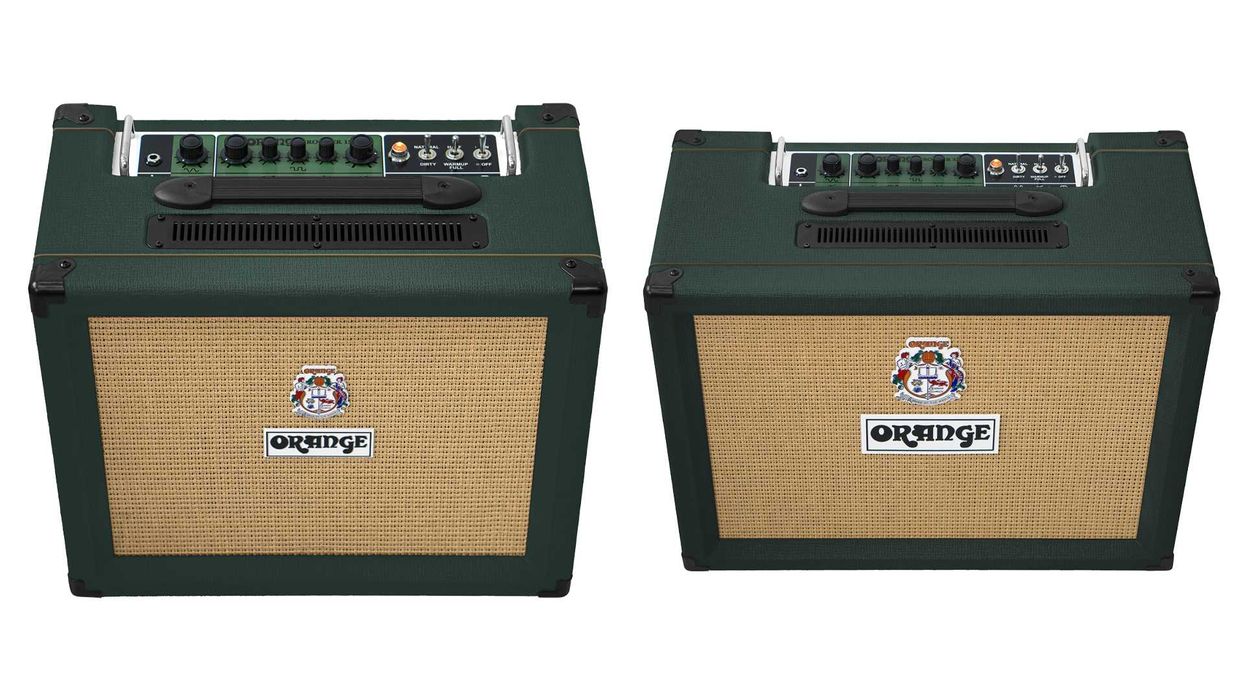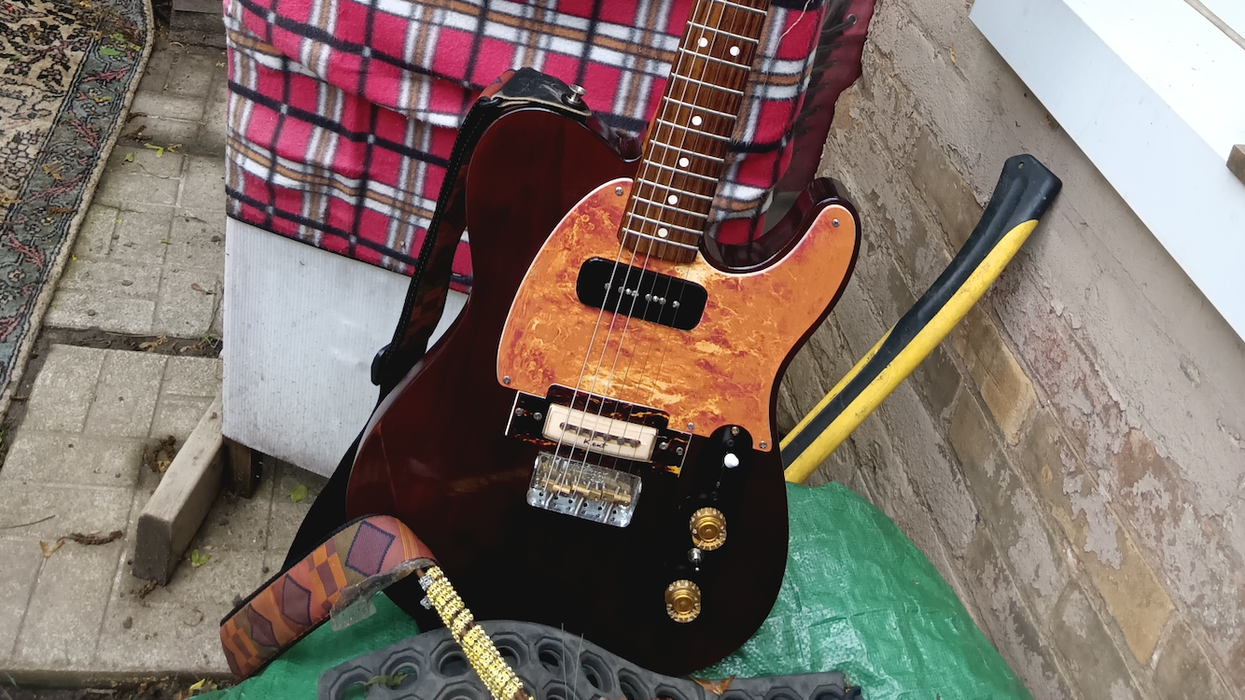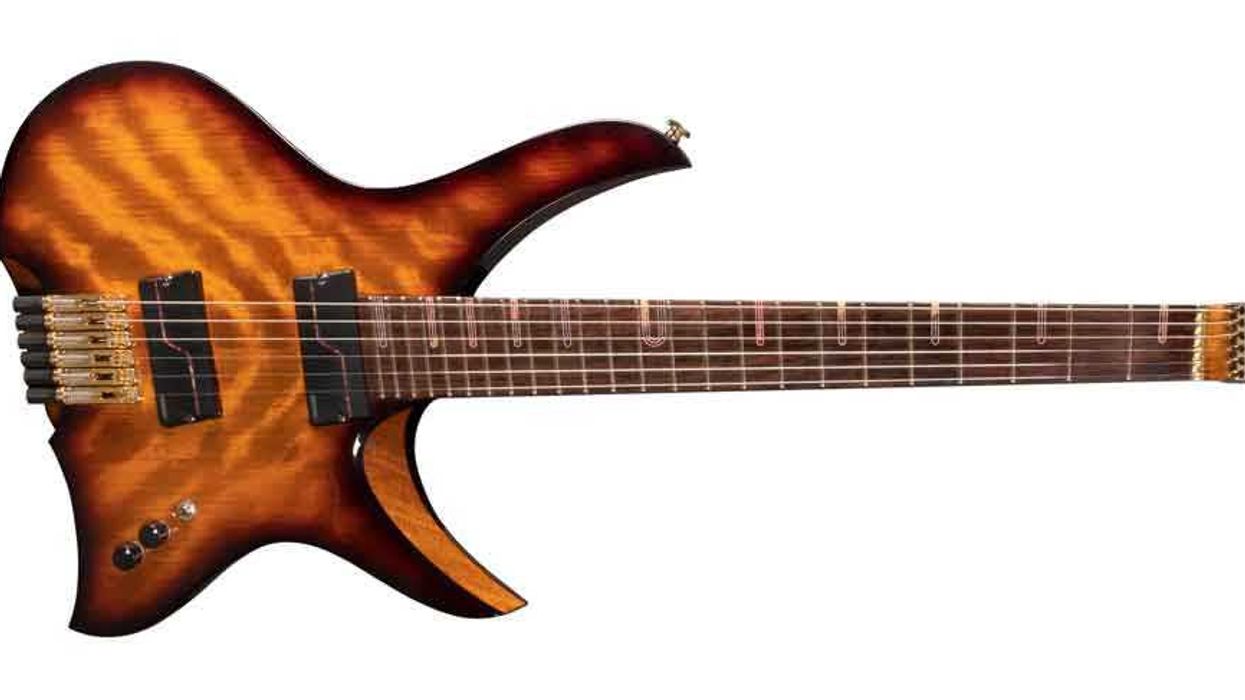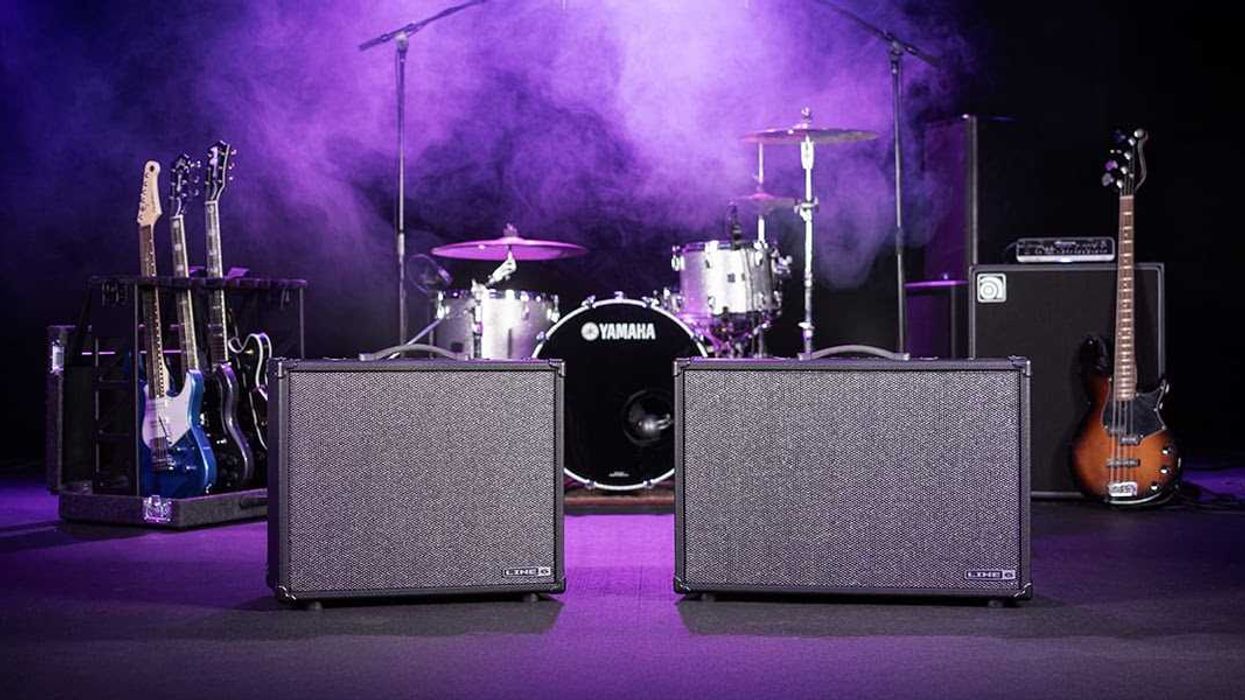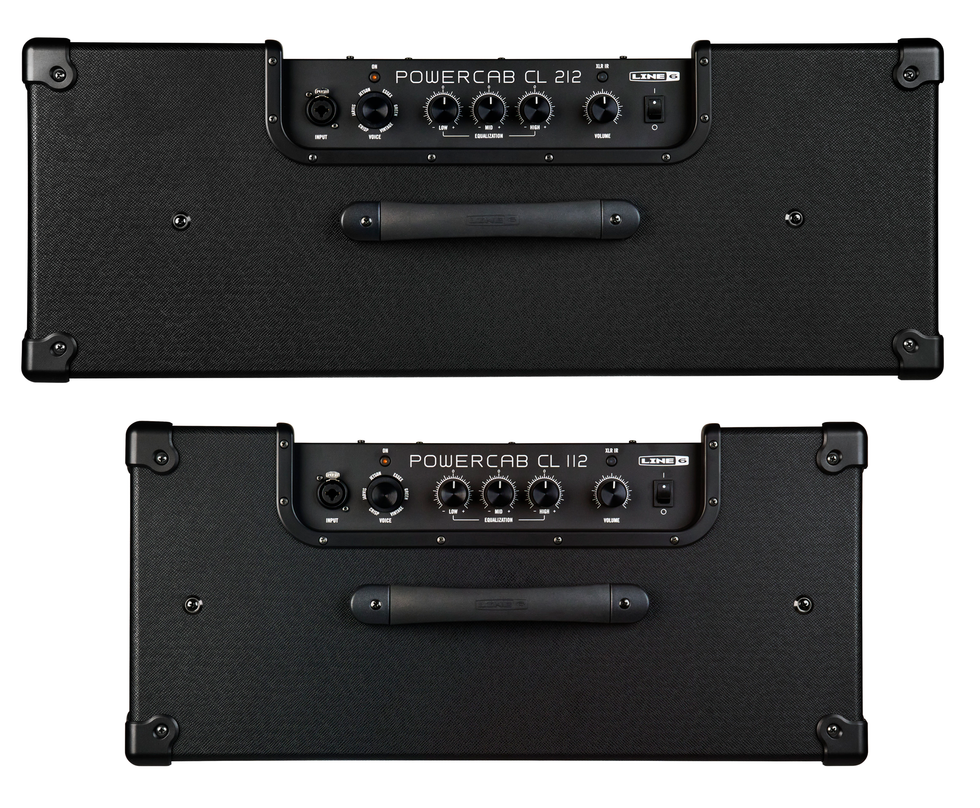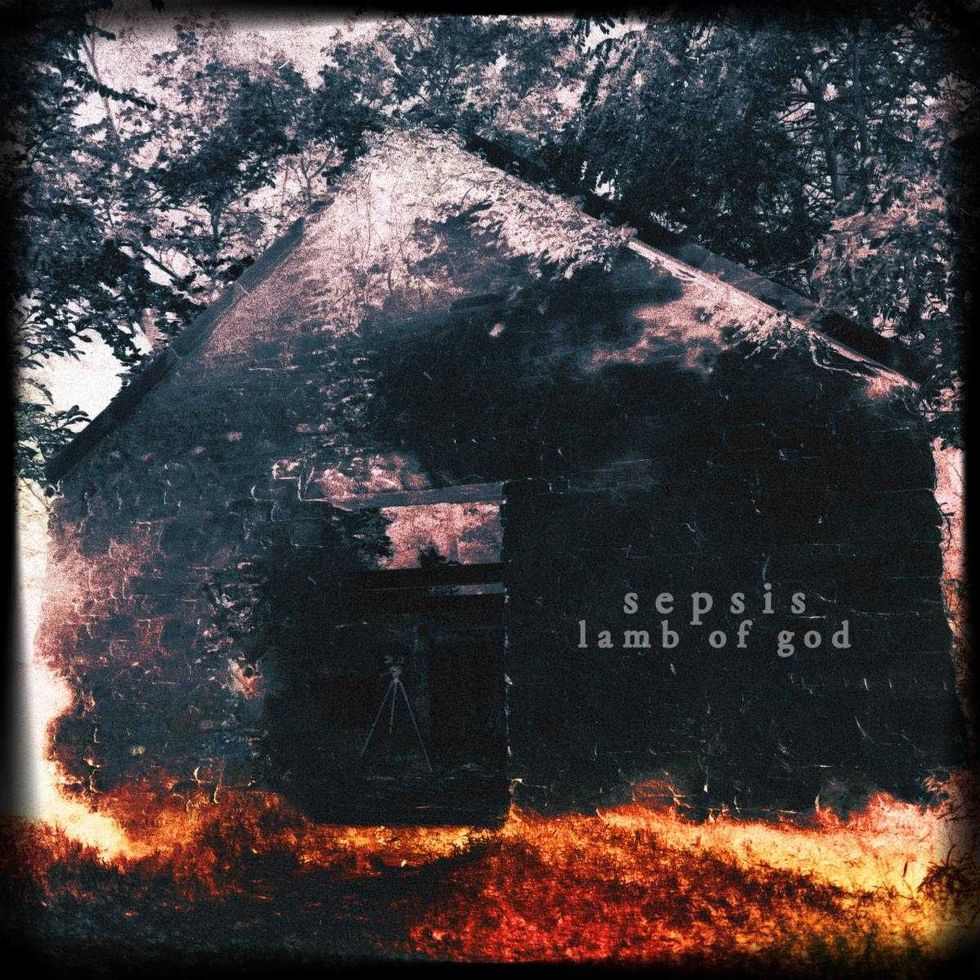ESP Guitars announces 43 new LTD and LTD Deluxe guitar models to kick off the new year.
A new Camo finish has been made available for the LTD and ESP James Hetfield Snakebyte. The Snakebyte features set-neck construction at 24.75" scale, 22 extra-jumbo frets, a TonePros locking TOM bridge and tailpiece, and James' own EMG JH SET active pickups.
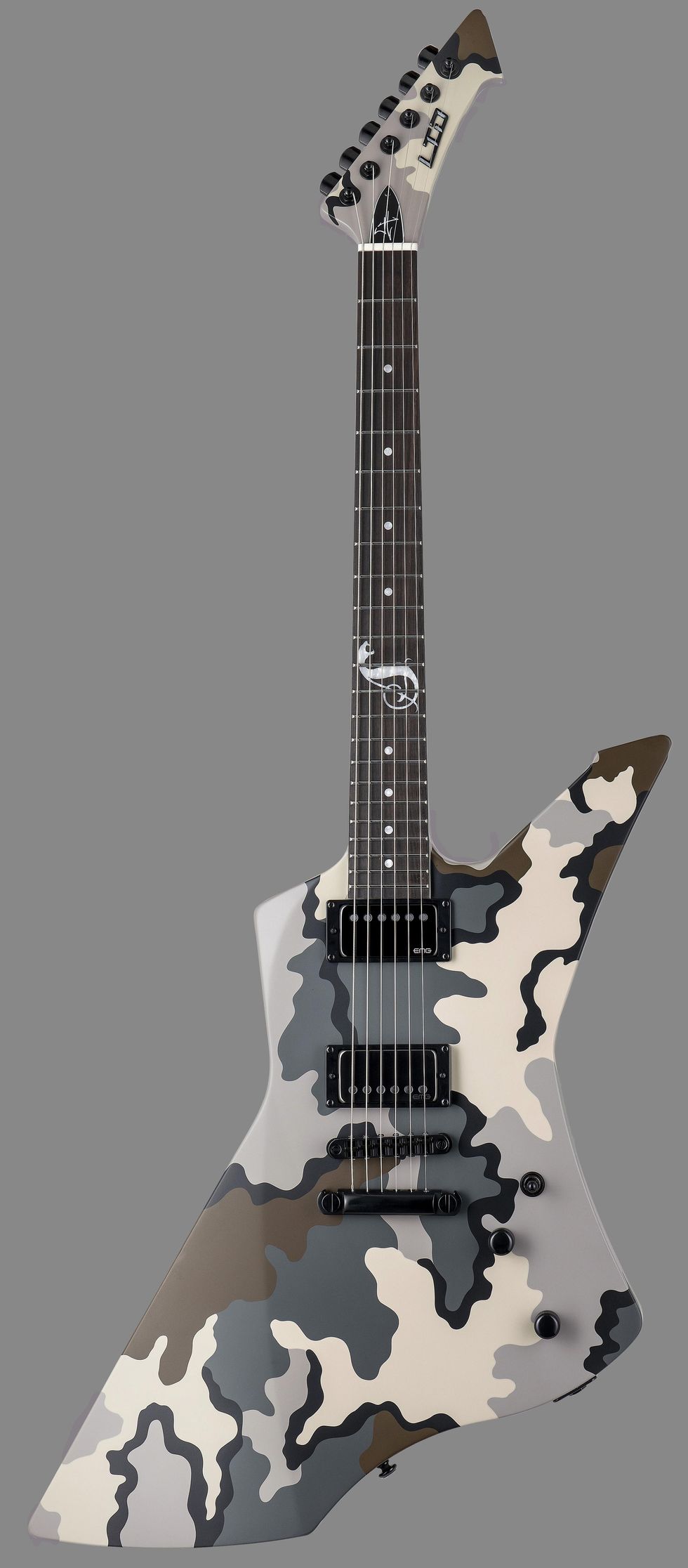
The LTD Arrow Series has expanded with four new additions. The LTD Deluxe Arrow-1000 offers a quilted maple top in a Charcoal Burst Satin finish. It features neck-thru-body construction, a reverse headstock with matching finish, Macassar ebony fingerboard with stainless steel frets, a set of direct mount Fishman Fluence Modern Humbucker active pickups, and a Floyd Rose 1000SE bridge with stainless steel screws. The LTD Deluxe Arrow-1000NT (Charcoal Metallic Satin) offers a recessed TonePros TOM bridge with string-thru-body, neck-thru-body construction, stainless steel frets, and direct mount Fishman Fluence Modern Humbucker active pickups. The LTD Deluxe Arrow-1000 EverTune includes the innovative EverTune constant tension bridge system, and comes in Black. All Arrow 1000 models have compound radius fingerboards. The LTD Arrow-200 (Military Green Satin) offers a more affordable version of the Arrow Series with a set-neck design, an LTD Floyd Rose tremolo, and a set of high output ESP LH-301 pickups with black covers.
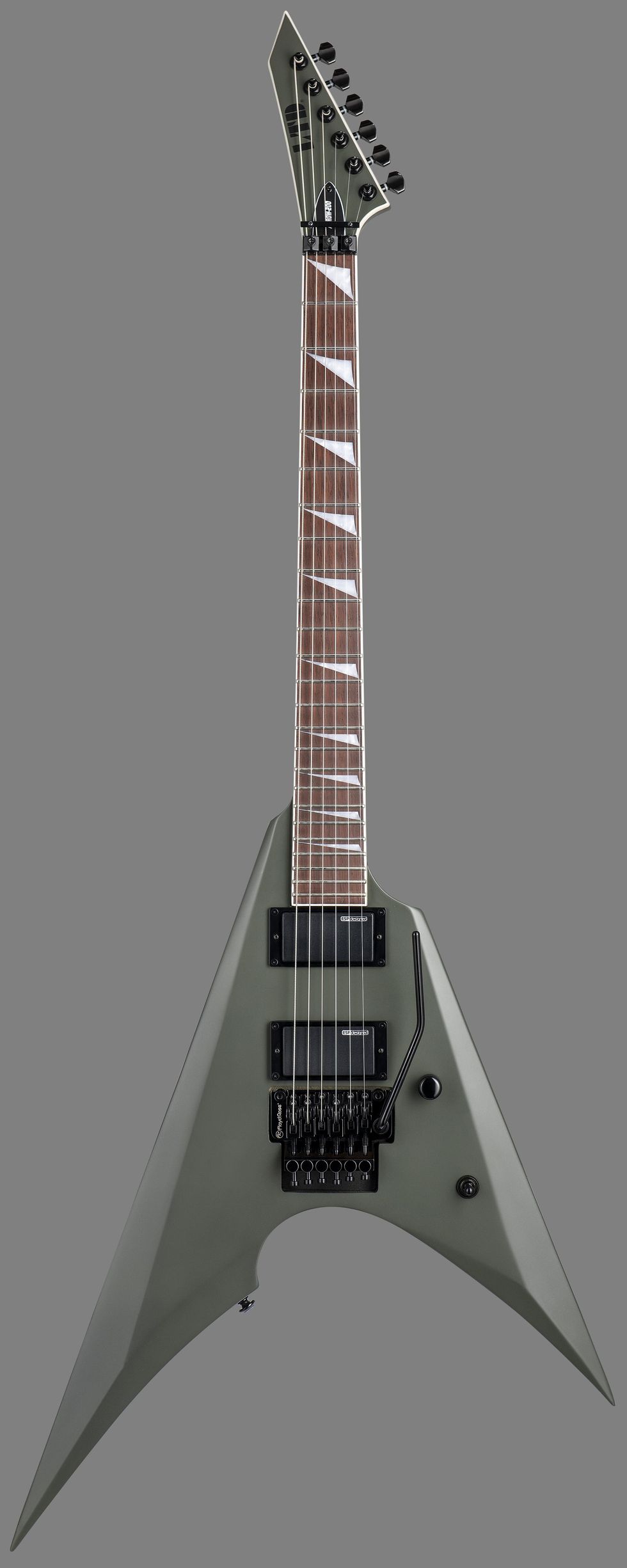
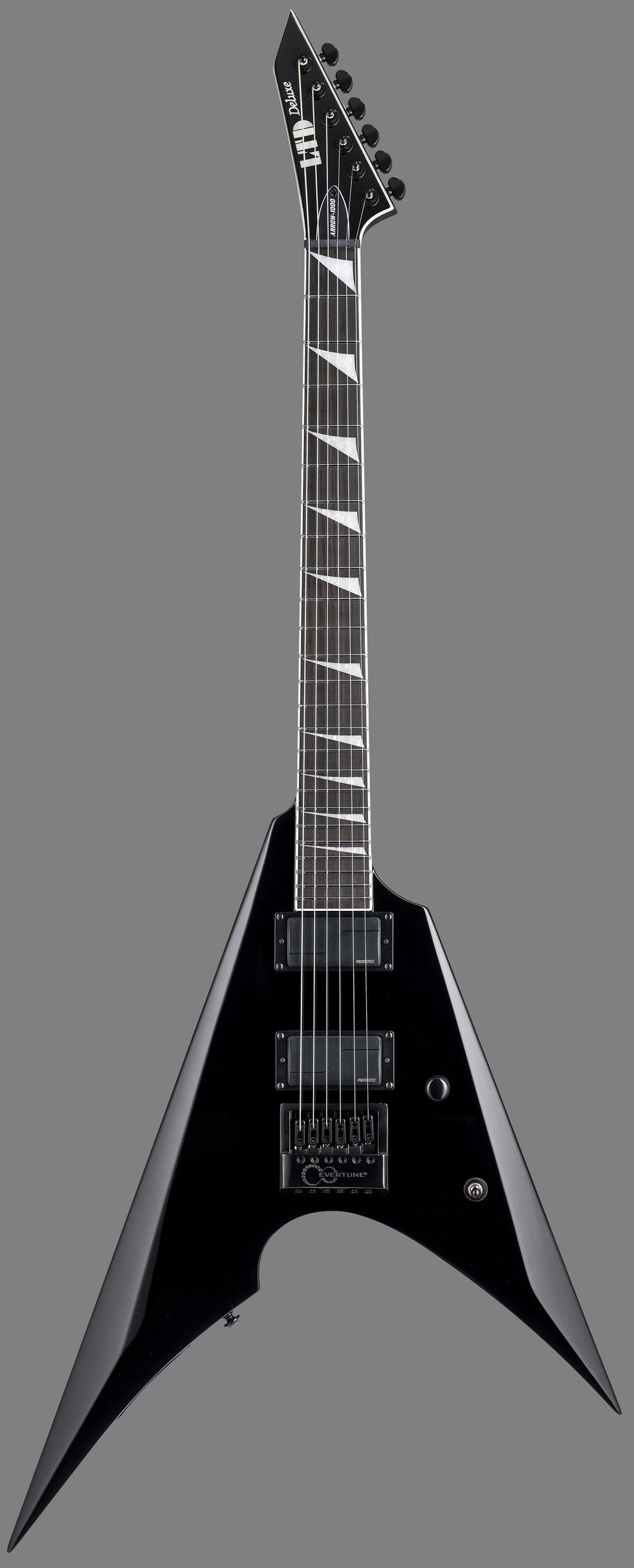
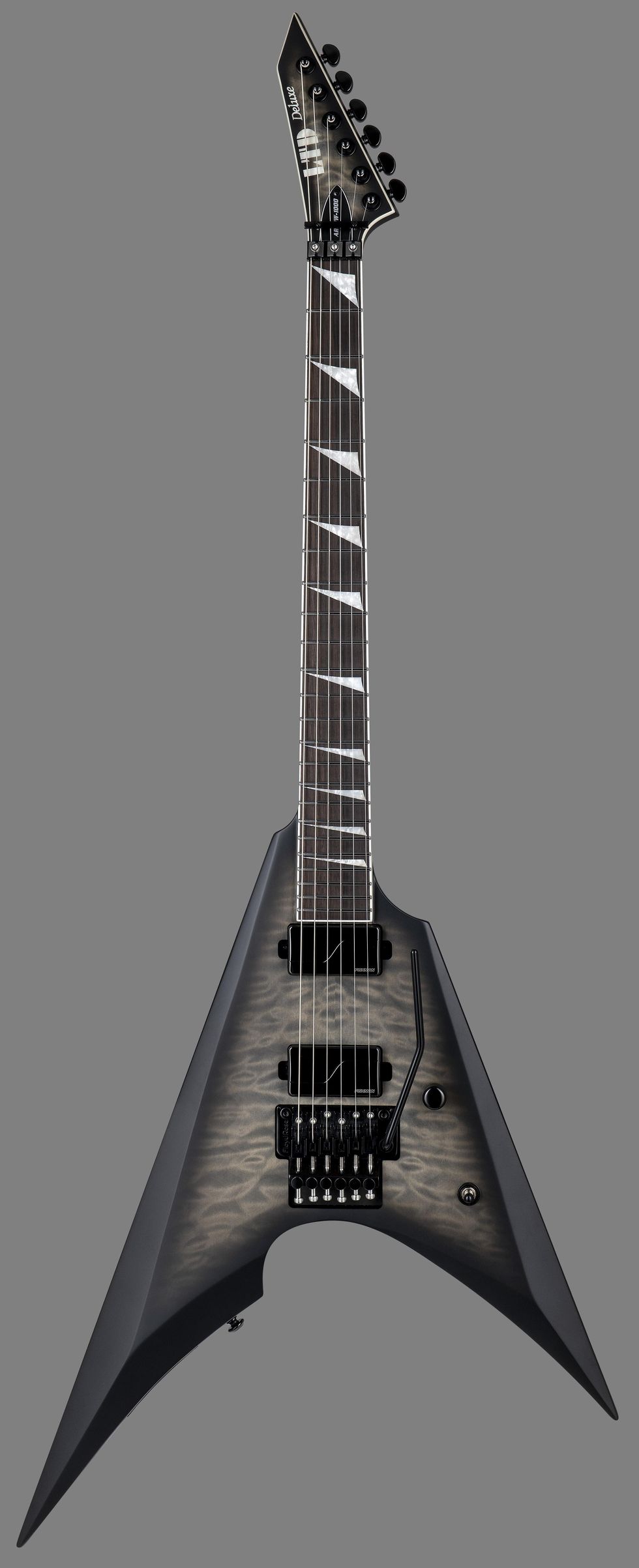
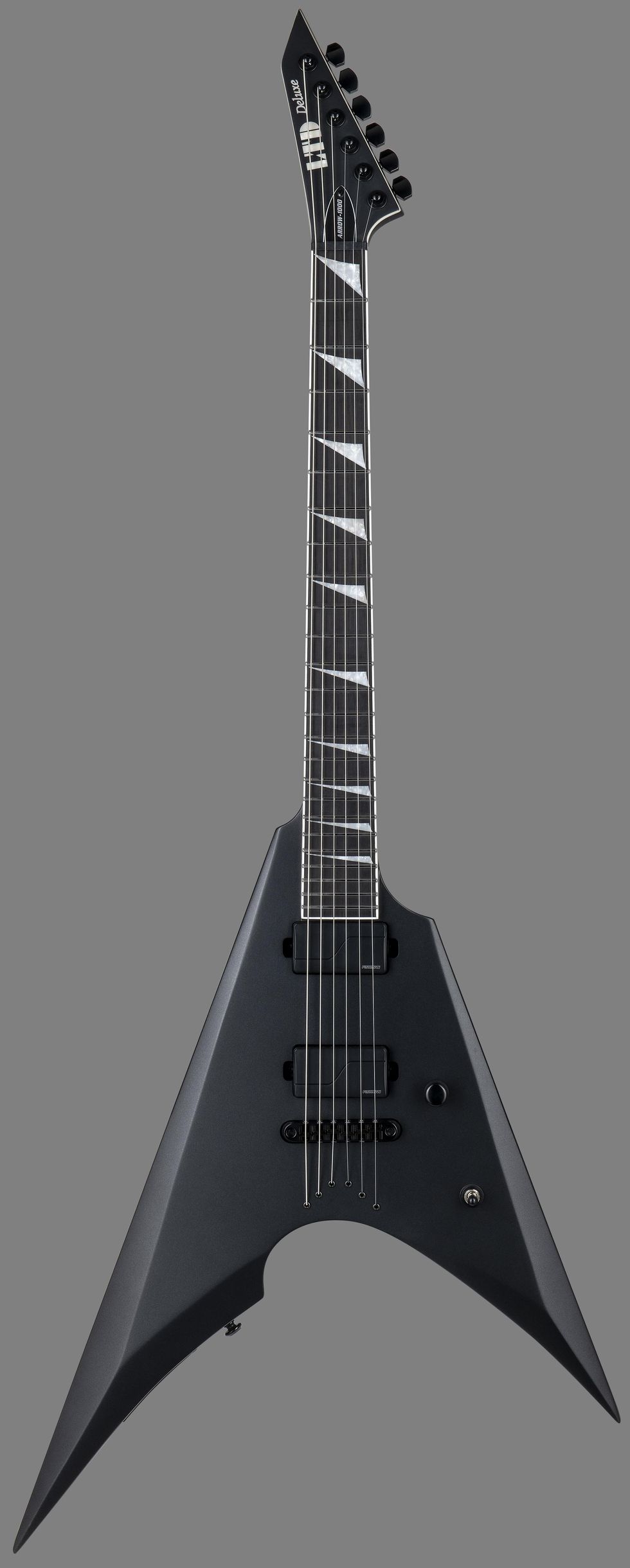
Seven new guitars have joined ESP’s popular LTD EC Series. The LTD Deluxe EC-1000 Baritone comes in a 27” baritone scale, with a Charcoal Metallic Satin finish and black single-ply binding. Features include 24 extra-jumbo stainless steel frets, glow-in-the-dark Luminlay side dots, a TonePros locking TOM bridge with string-thru-body, and a set of direct-mount Fishman Fluence Modern Humbucker active pickups with black nickel covers. The new LTD Deluxe EC-1000 in See Thru Purple Sunburst offers 24 extra-jumbo stainless steel frets, and a set of EMG 60TW-R (neck) and EMG 81 (bridge) pickups. The LTD Deluxe EC-1000T CTM EverTune has a traditional full-thickness body, custom multi-ply binding on the guitar’s front and back, and the EverTune constant tension bridge system. It also features Fishman Fluence Classic Humbucker pickups and 22 extra-jumbo stainless steel frets.
The new LTD Deluxe EC-1000T CTM in Violet Shadow has a gorgeous flamed maple top, traditional thickness body and multi-ply binding. This guitar includes a set of direct-mount Fishman Fluence Open Core Classic Humbucker pickups with multiple voicings, 22 extra-jumbo stainless steel frets, and a TonePro locking TOM bridge and tailpiece. The LTD Deluxe EC-1000T CTM in Charcoal Burst combines an elegant quilted maple top and a traditional full-thickness mahogany body (with no waist cut). It features a TonePros locking TOM bridge and tailpiece, matching headstock finish, 22 extra-jumbo stainless steel frets, and a set of direct-mount Fishman Fluence Open Core Classic Humbucker pickups. Another new EC Series guitar is the LTD Deluxe EC-1000T CTM Vintage Gold Satin, which features a traditional full-thickness mahogany body, multi-ply binding, a TonePros locking TOM bridge and tailpiece, 22 extra-jumbo stainless steel frets, and a set of direct-mount Fishman Fluence Open Core Classic Humbucker pickups with multiple voicings. Finally, a more affordable version of the EC Series has been announced with the LTD EC-201, which offers set-neck construction, 24 extra-jumbo frets, and a single ESP LH-150B pickup with antique nickel cover, which can be split for single-coil sounds with a push-pull volume knob.
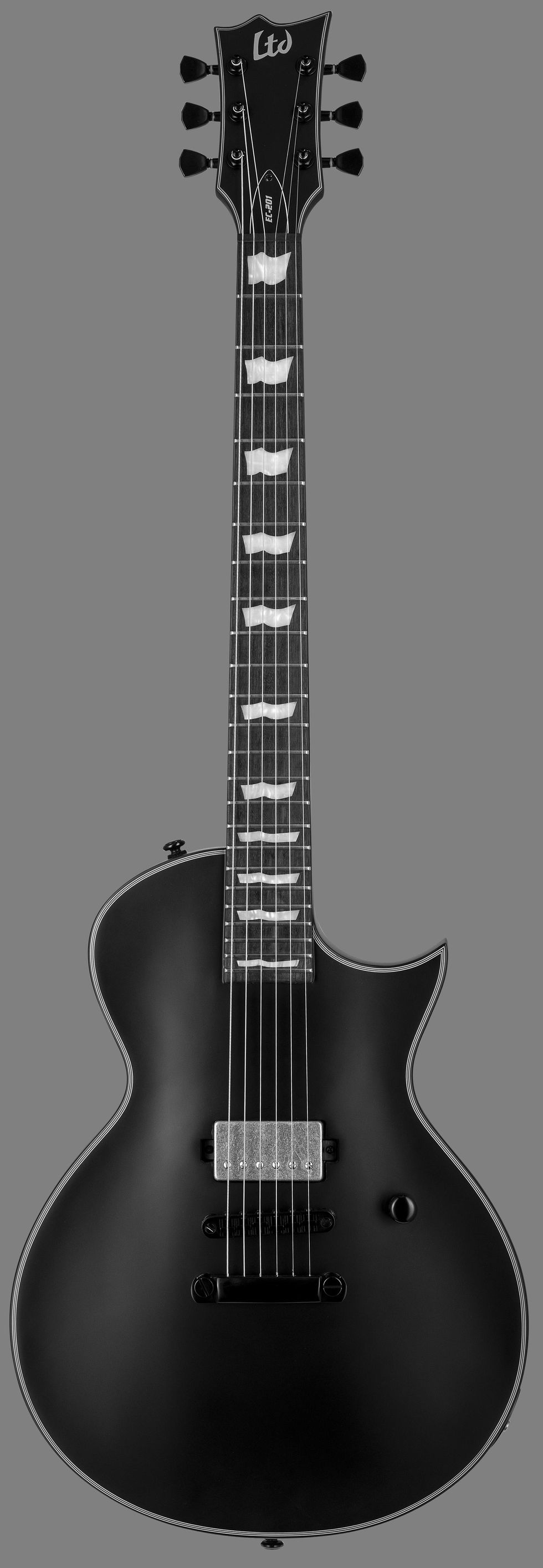
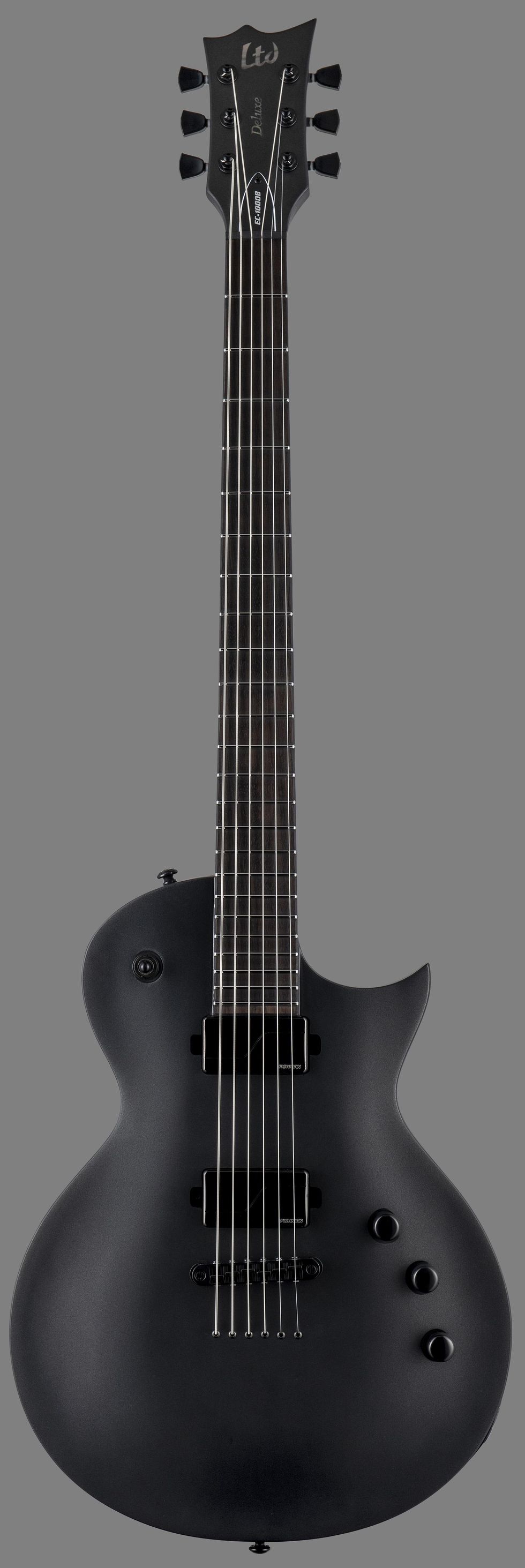
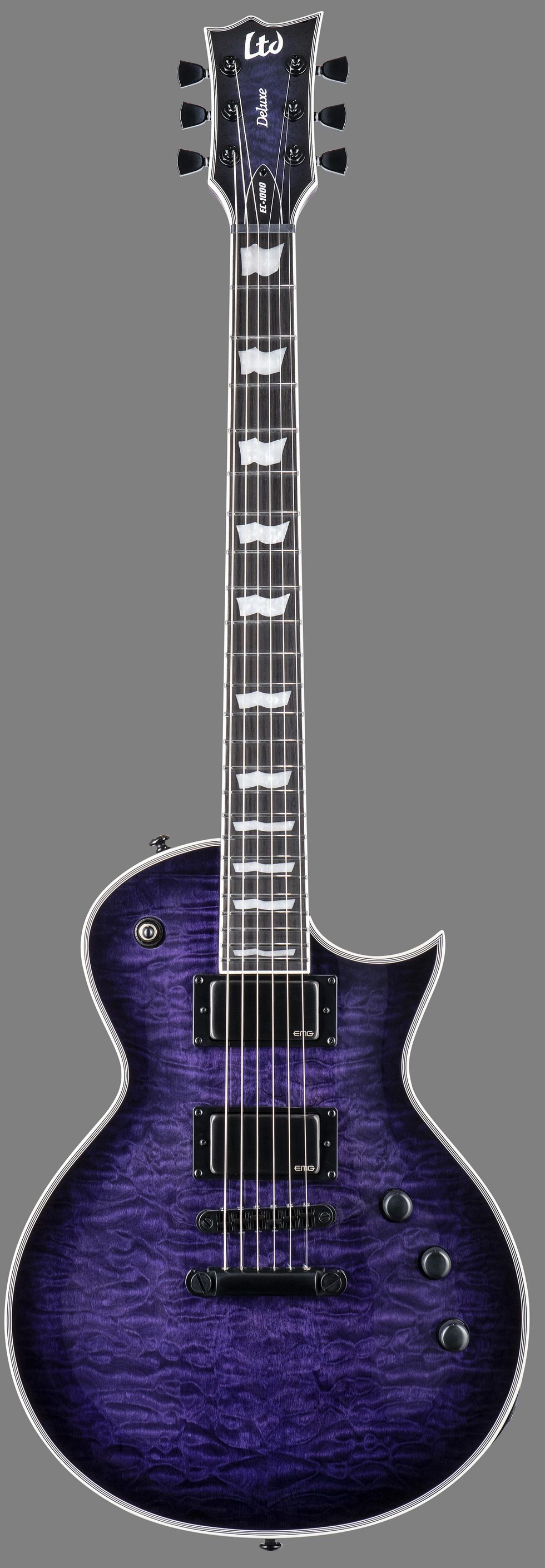

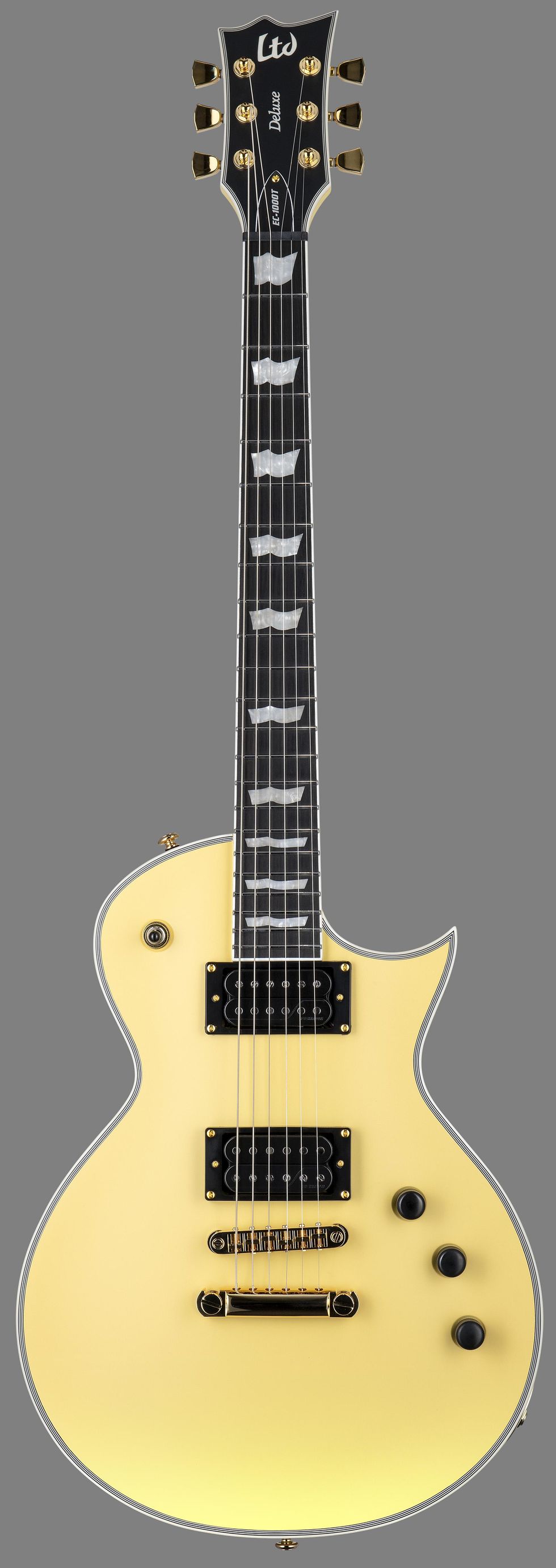
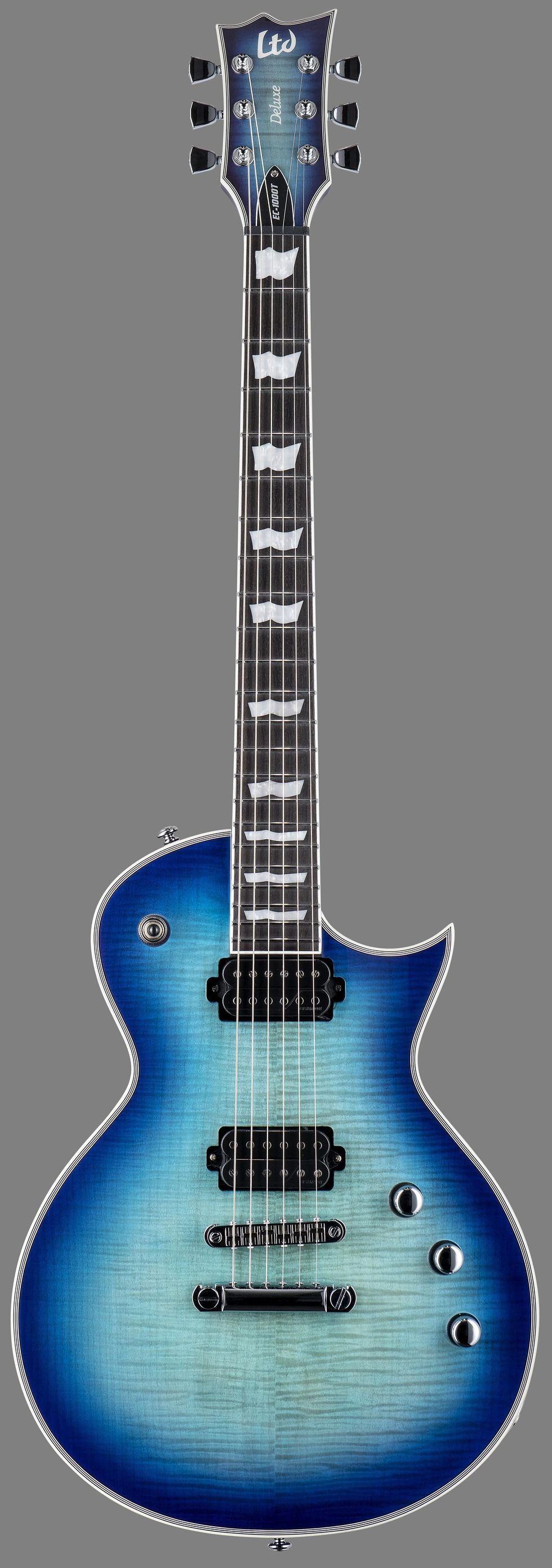
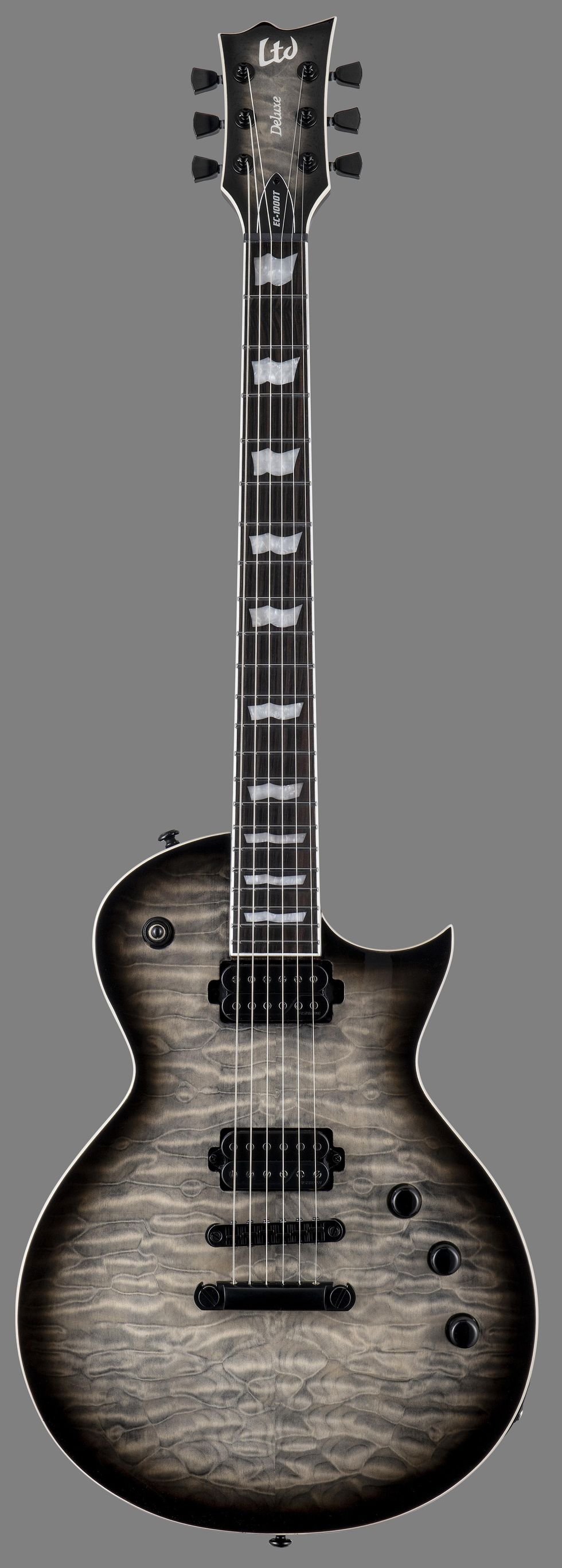
ESP’s EX Series has two new models for 2022. The LTD EX-7 Baritone Black Metal is a seven-string guitar at 27” baritone scale. It offers the Black Metal design theme of all-black finish, components, and hardware, and a Macassar ebony fingerboard with no inlays and glow-in-the-dark side markers. It features a set-thru maple neck, 24 extra-jumbo stainless steel frets, a TonePros locking bridge and tailpiece, and a single direct-mount EMG 81-7H pickup with black logo. The LTD EX-201 is an affordable way to get into the extreme EX shape, and offers a reverse matching headstock and a single direct-mount ESP LH-150B pickup with antique nickel cover, which can be split for single-coil sounds with a push pull volume knob. A high output pickup, the LH-150B is great for rock and metal, and has an antique nickel cover. ESP also made an addition to their F Series with the LTD Deluxe F-1001, which comes in the multihued, iridescent Violet Andromeda Satin finish. It features set-thru construction, an extra-thin maple neck that has a compound radius for maximum speed and comfort, 24 extra-jumbo stainless steel frets, a Floyd Rose 1000SE bridge with stainless steel screws, and a single direct-mount EMG 81TW active pickup with a brushed black chrome cover.
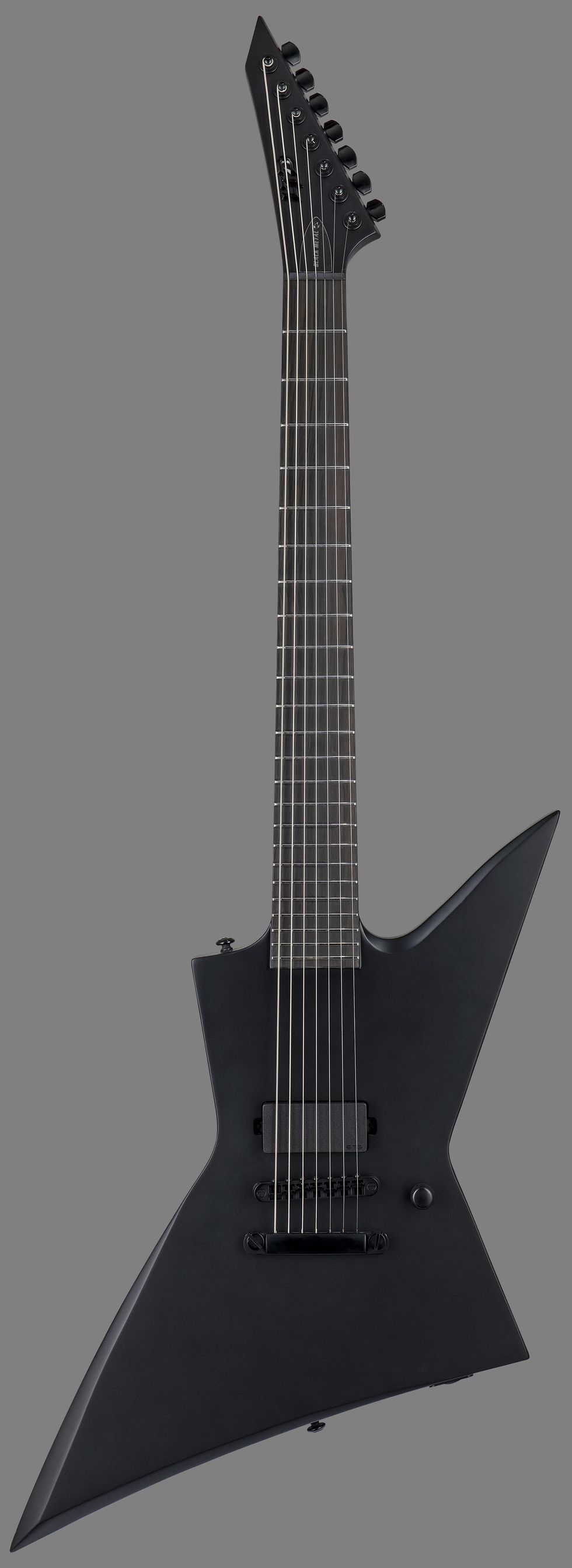
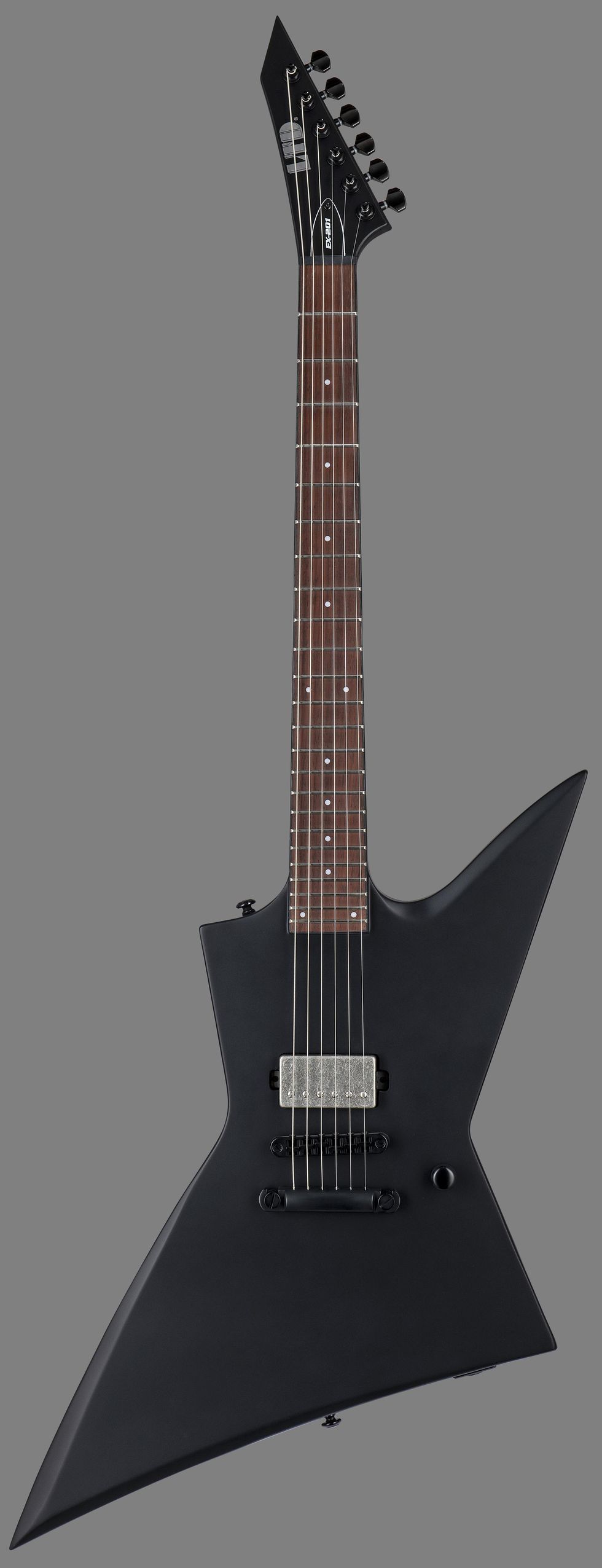
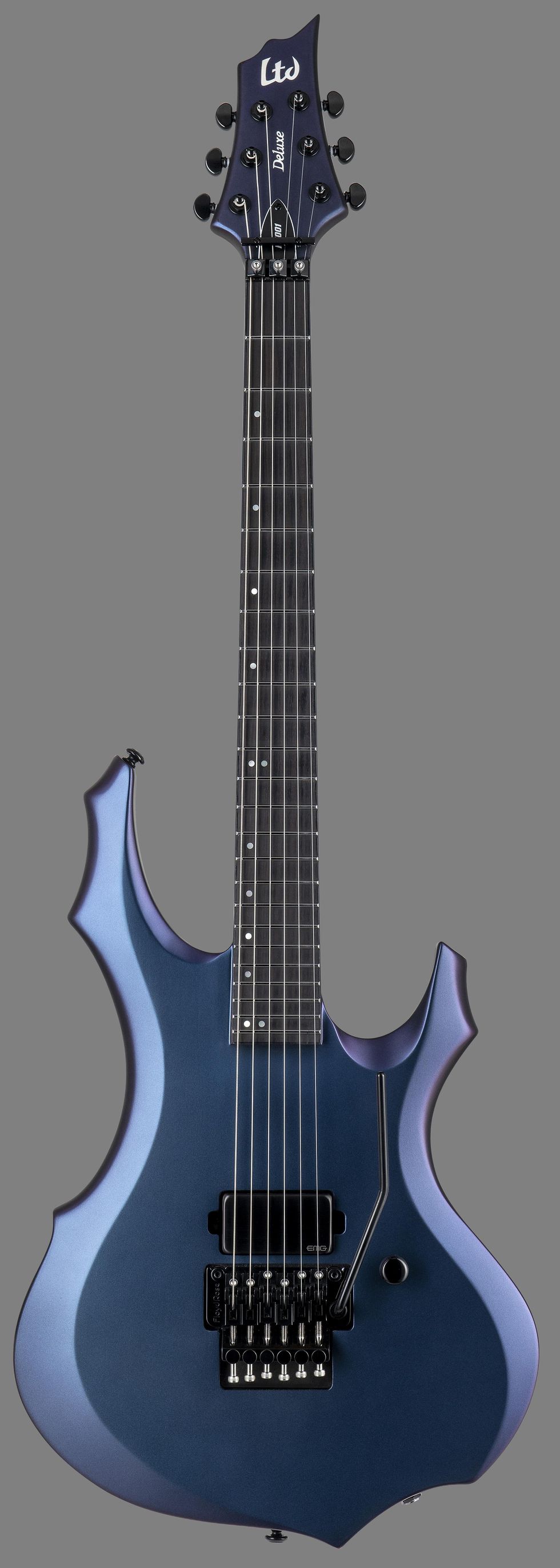
New models in the H Series and H3 Series include the new LTD Deluxe H-1000 EverTune in See Thru Purple Sunburst, featuring the EverTune constant tension bridge, 24 extra-jumbo stainless steel frets, and a set of Fishman Fluence Modern Humbuckers. Available in Snow White finish, the LTD Deluxe H3-1000FR has an extra-thin maple neck with a compound radius, 24 extra-jumbo stainless steel frets, a Floyd Rose 1000SE bridge with stainless steel screws, and EMG 66TW (neck) and EMG 57 (bridge) pickups in brushed gold covers. The LTD Deluxe H3-1000 in See Thru Black Cherry has a quilted maple top, and features a compound neck radius, 24 extra-jumbo stainless steel frets, a TonePros locking TOM bridge with string-thru-body, and a set of direct-mount Seymour Duncan Sentient (neck) and Pegasus (bridge) pickups. The LTD Deluxe H3-1007 Baritone is a 7-string, 27” baritone scale extended range guitar with a flamed maple top in See Thru Black Sunburst finish. It includes a set of direct-mount Seymour Duncan Sentient (neck) and Pegasus (bridge) pickups.


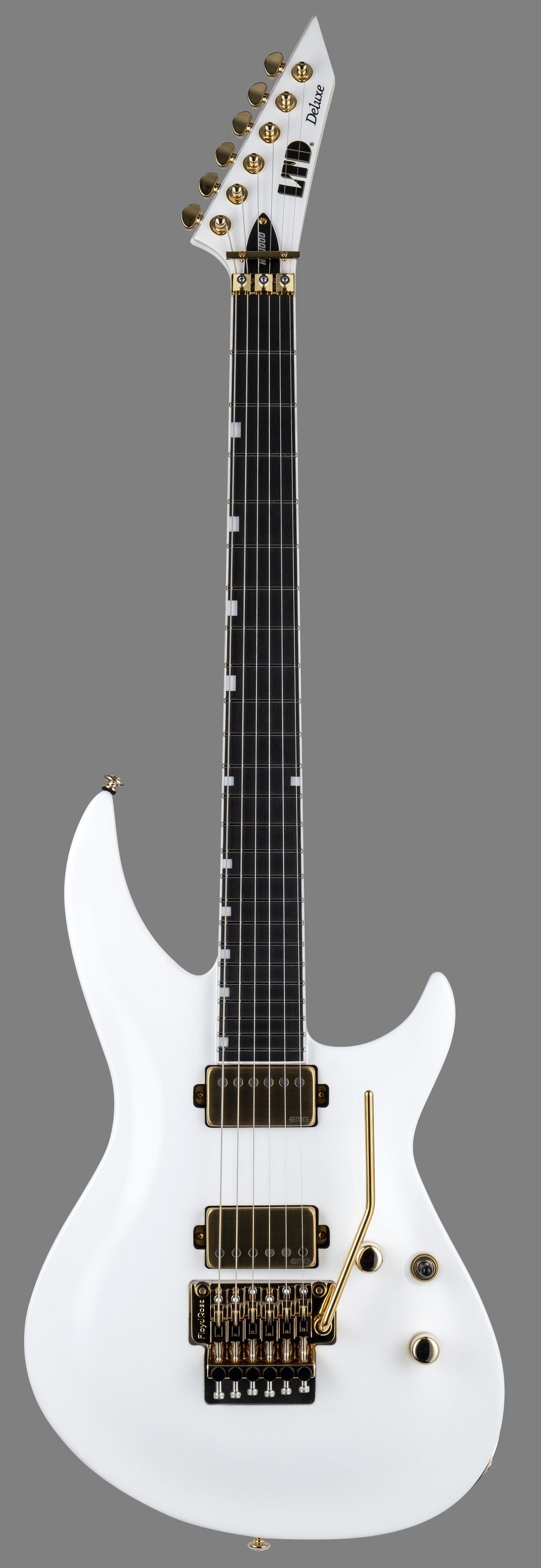

ESP has added new finishes for its popular ’87 Series guitars. The LTD M-1 Custom ’87 offers neck-thru body construction, a top-mounted Floyd Rose 1000 bridge, a single Seymour Duncan Distortion TB-6 pickup with a push-pull control for coil splitting, and an EMG PA-2 boost switch for when you need that extra push of raw power. For 2022, it is being made available in Dark Metallic Purple and Metallic Gold finishes. The LTD Mirage Deluxe ’87 features a Floyd Rose 1000 bridge and a pickup set that includes a Seymour Duncan Distortion TB-6 in the bridge and Hot Rail single coil in the neck. Its new finishes for 2022 include Snow White and Metallic Gold.
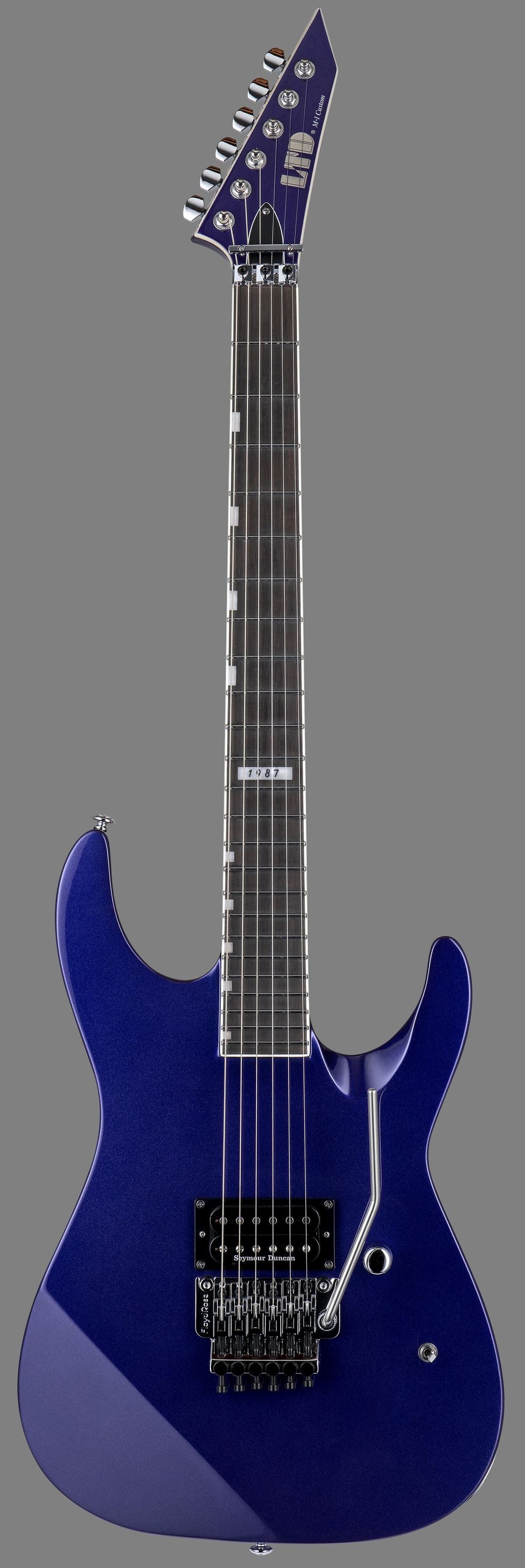


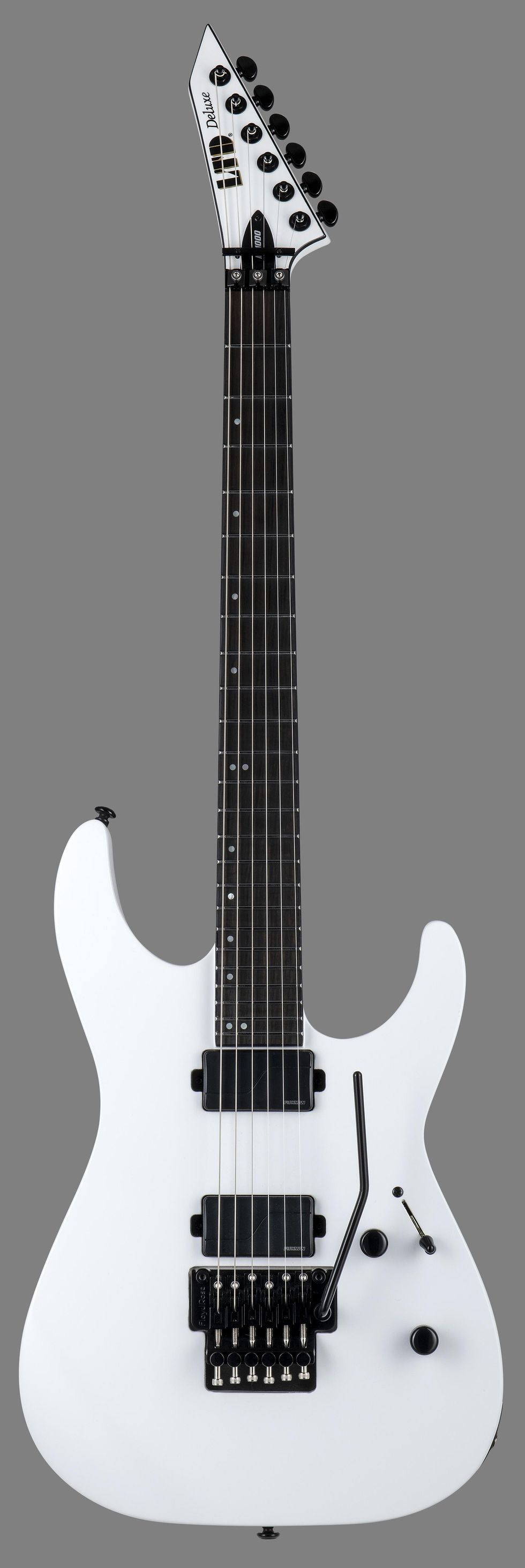
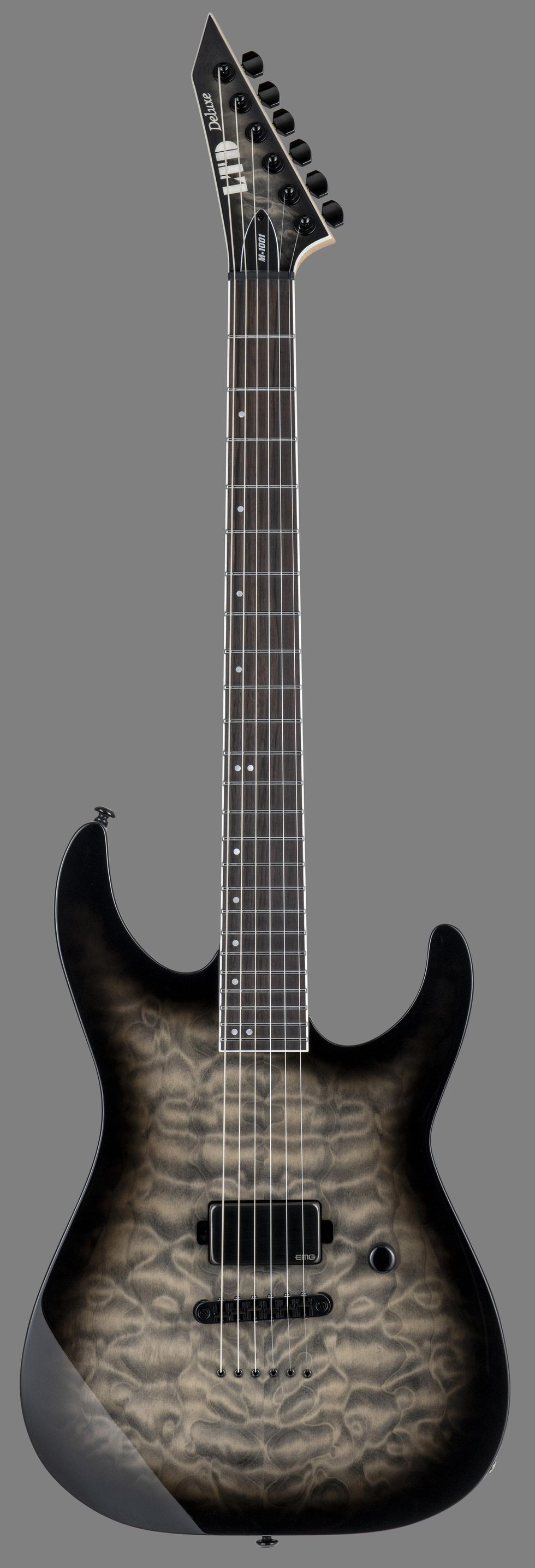
Available in Black Satin finish, the LTD Deluxe MH-1000 Baritone offers the extended range of a 27” baritone scale. It features neck-thru-body construction, a compound neck radius, 24 extra jumbo stainless steel frets, a TonePros locking TOM bridge with string-thru-body, and direct-mount EMG 81 and EMG 60TW-R pickups with brushed black chrome covers. The LTD Deluxe MH-1000 comes in the beautiful new Black Ocean finish on its quilted maple top, and includes 24 extra-jumbo stainless steel frets, a Floyd Rose 1000SE bridge with stainless steel screws, and a set of direct-mount Fishman Fluence Modern Humbuckers with brushed stainless steel covers.


Three new models are being added to the Phoenix Series. The LTD Phoenix-7 Baritone Black Metal is an extended-range version of the Phoenix with seven strings and 27” baritone scale. It features neck-thru body construction, a Fishman Modern 7-String Humbucker pickup, and 22 extra-jumbo stainless steel frets, and a TonePros locking TOM bridge with string-thru-body. The LTD Deluxe Phoenix-1000 EverTune is the first Phoenix model to offer the EverTune constant tension bridge. Finished in Silver Sunburst Satin, it features neck-thru-body construction, 22 extra-jumbo stainless steel frets, and a set of Fishman Fluence Modern Humbuckers with black nickel covers. The LTD Deluxe Phoenix-1000 has a quilted maple top in a See Thru Black Sunburst finish. Features include neck-thru-body construction, a reversed headstock with matching finish, 22 extra-jumbo stainless steel frets, a TonePros locking TOM bridge and tailpiece, and a set of Seymour Duncan Phat Cat (neck) and Custom (bridge) pickups.
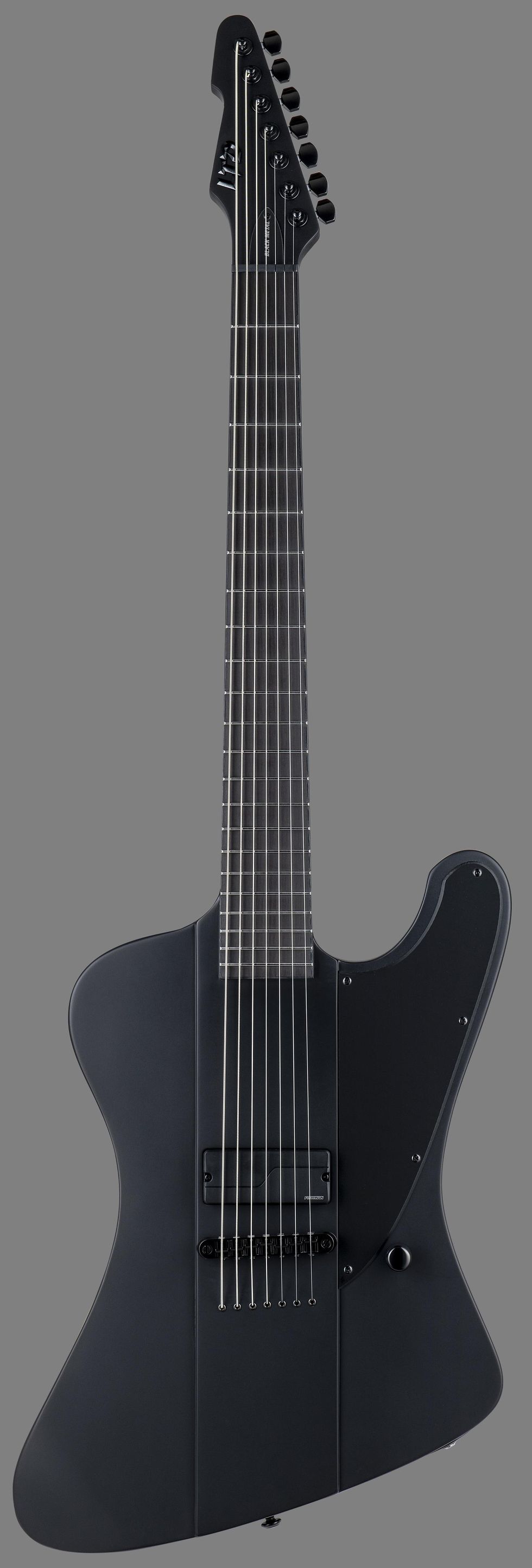

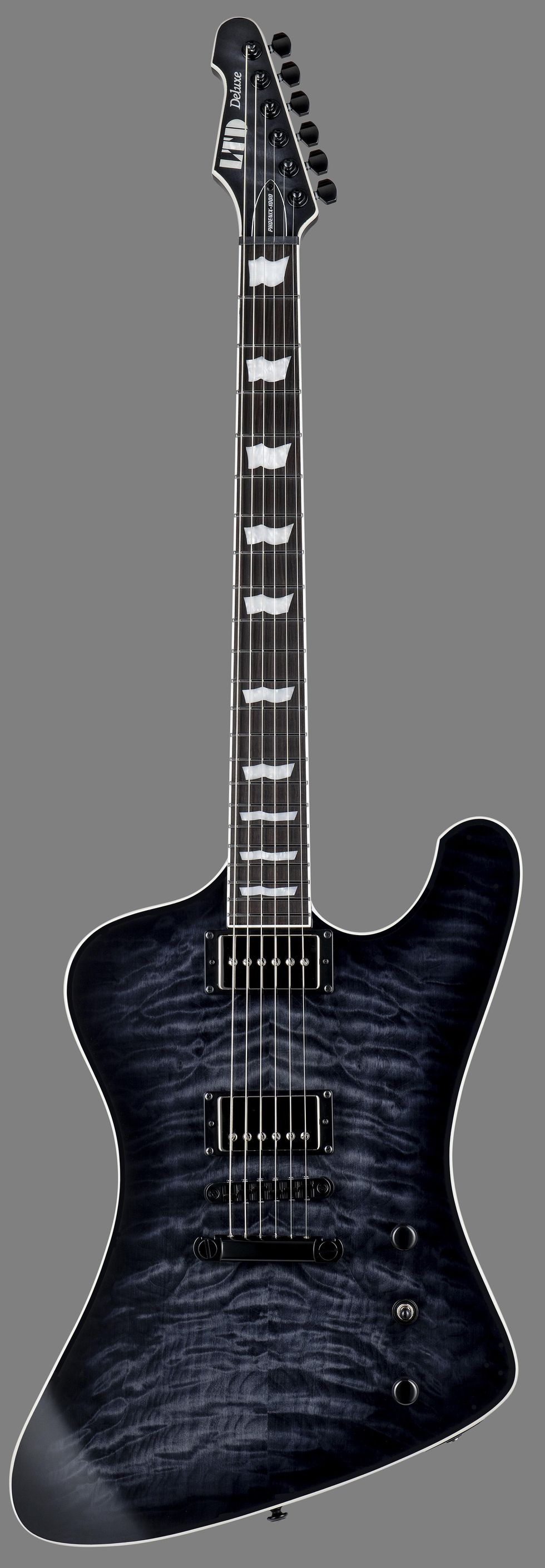
The SN Series is expanding with four new models. The LTD Deluxe SN-1000 EverTune is the first SN Series guitar to include the innovative EverTune constant tension bridge. Available in Charcoal Metallic Satin finish, it comes in an H/S/S pickup configuration with two Seymour Duncan Hot Strat single coils in the neck and middle positions, and a high-output Pegasus in the bridge. Other features include a roasted maple neck with compound radius, 22 extra-jumbo stainless steel frets (scalloped from frets 17-24), a matching-finish headstock, and a special mini toggle switch (same as found on the ESP Snapper models) provides even more tonal options. The LTD Deluxe SN-1007 Baritone HT is the first SN Series model with the extended range of seven strings and a 27” baritone scale. Offered in the textured Black Blast finish, it has a roasted maple neck with a compound radius, 24 extra-jumbo stainless steel frets (scalloped from frets 17-24), a black bone nut, a Hipshot hardtail bridge with string thru body, and a set of Fishman Fluence Modern Humbuckers.
The LTD Deluxe SN-1000HT Fire Blast has a textured, sandblasted Fire Blast finish over a swamp ash body, a roasted maple neck with a compound radius, 22 extra-jumbo stainless steel frets, a black bone nut, a Hipshot hardtail bridge with string thru body, and a set of Fishman Fluence Modern Humbuckers. The LTD Deluxe SN-1000FR (Snow White finish) includes a double-locking Floyd Rose 1000SE bridge with stainless steel screws, a roasted maple neck with a compound radius, 24 extra-jumbo stainless steel frets (scalloped from frets 17-24), a matching-finish headstock, and an H/S/S pickup configuration with two Fishman Fluence Single Width pickups in the neck and middle positions and a Fishman Fluence Classic Humbucker in the bridge.
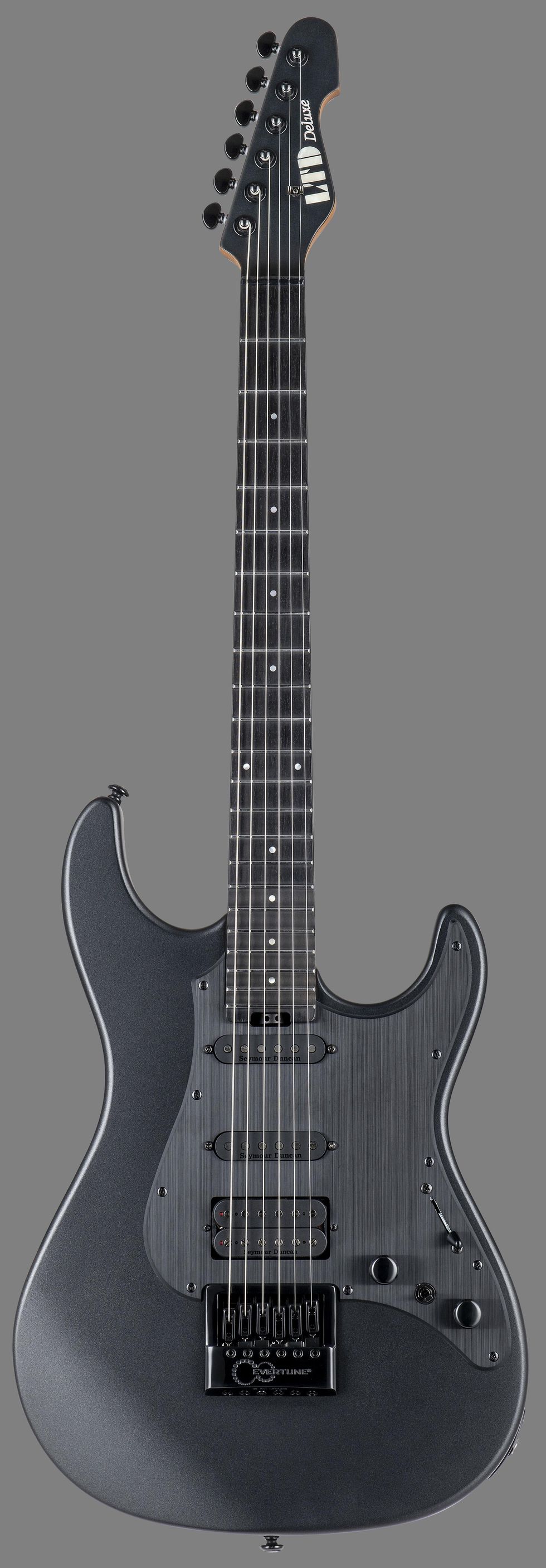

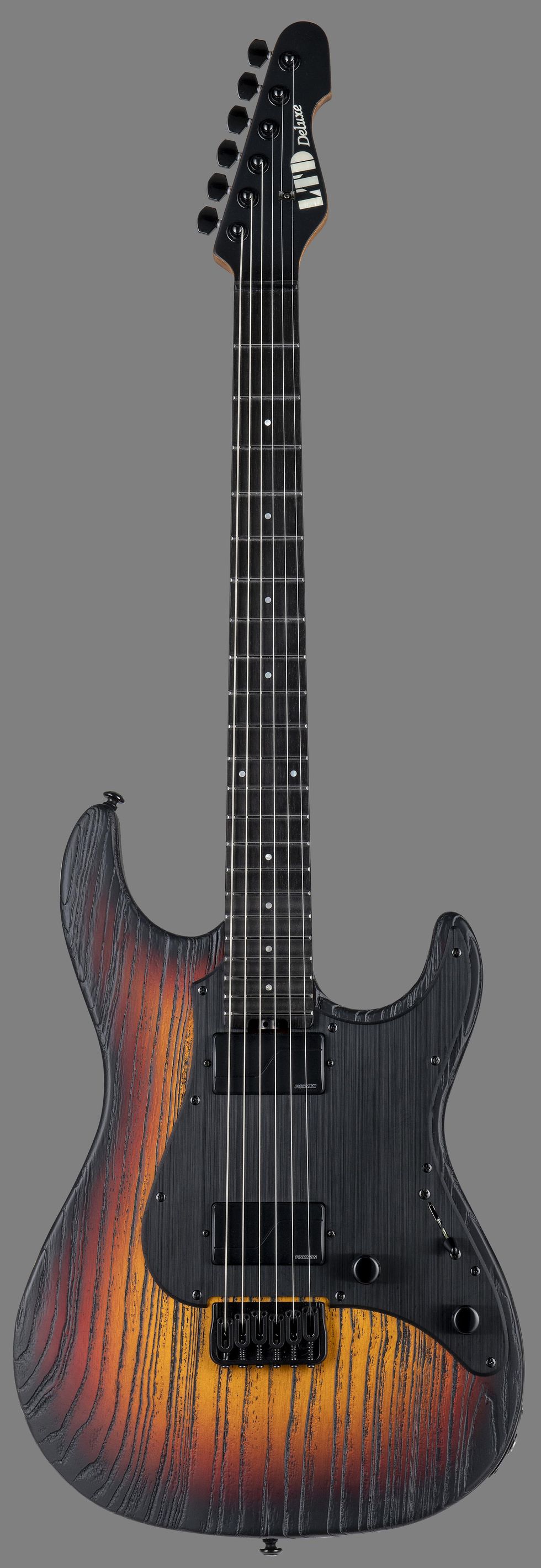

Three new models are also joining the TE Series. The LTD Deluxe TE-1000 Snow White offers set-thru construction, 24 extra-jumbo stainless steel frets, a Hipshot hardtail bridge with string thru body, and a set of Fishman Fluence Modern Humbuckers. Two new lower-priced TE models join the series with the LTD TE-200 (Black finish, LTD fixed bridge with string-thru-body and a set of ESP LH-150 pickups) and the LTD TE-201 (Black Satin finish, LTD fixed bridge with string-thru-body, and a single ESP LH-150B pickup with antique nickel cover).

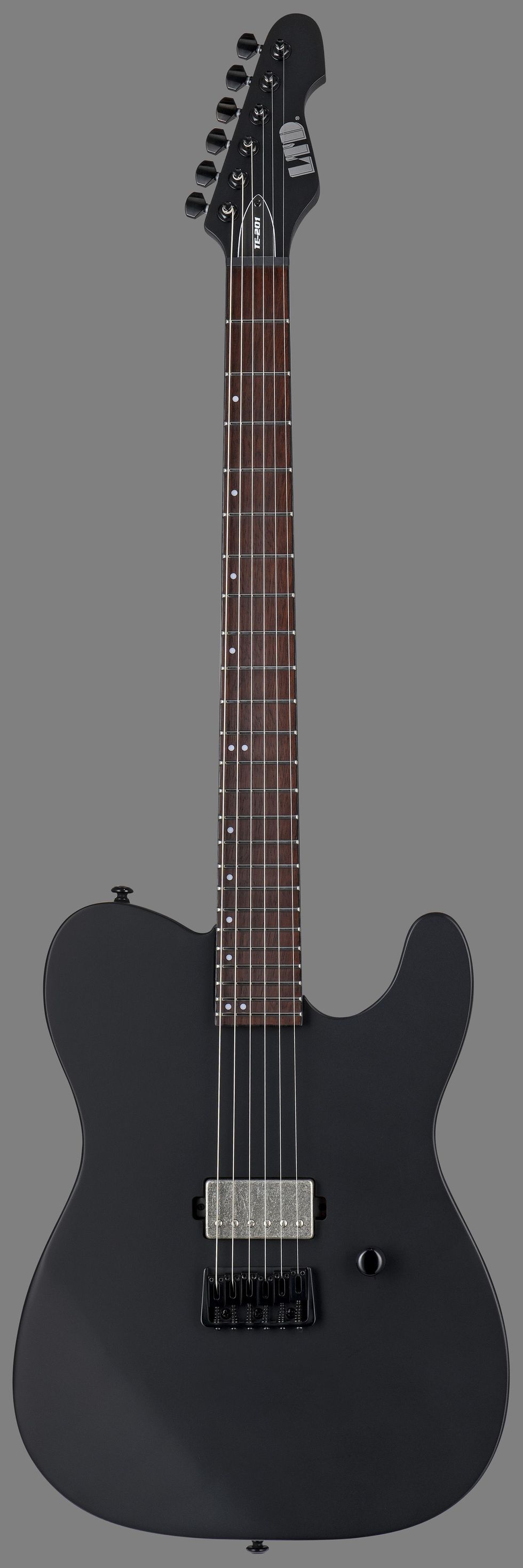

A new finish comes to the LTD TL-6. Now in Purple Sparkle Burst, the TL-6 is a chambered transducer electric guitar with a Graphtech NuBone-XB nut and saddle, a Fishman SONICORE pickup, and TL-3 preamp with onboard tuner.
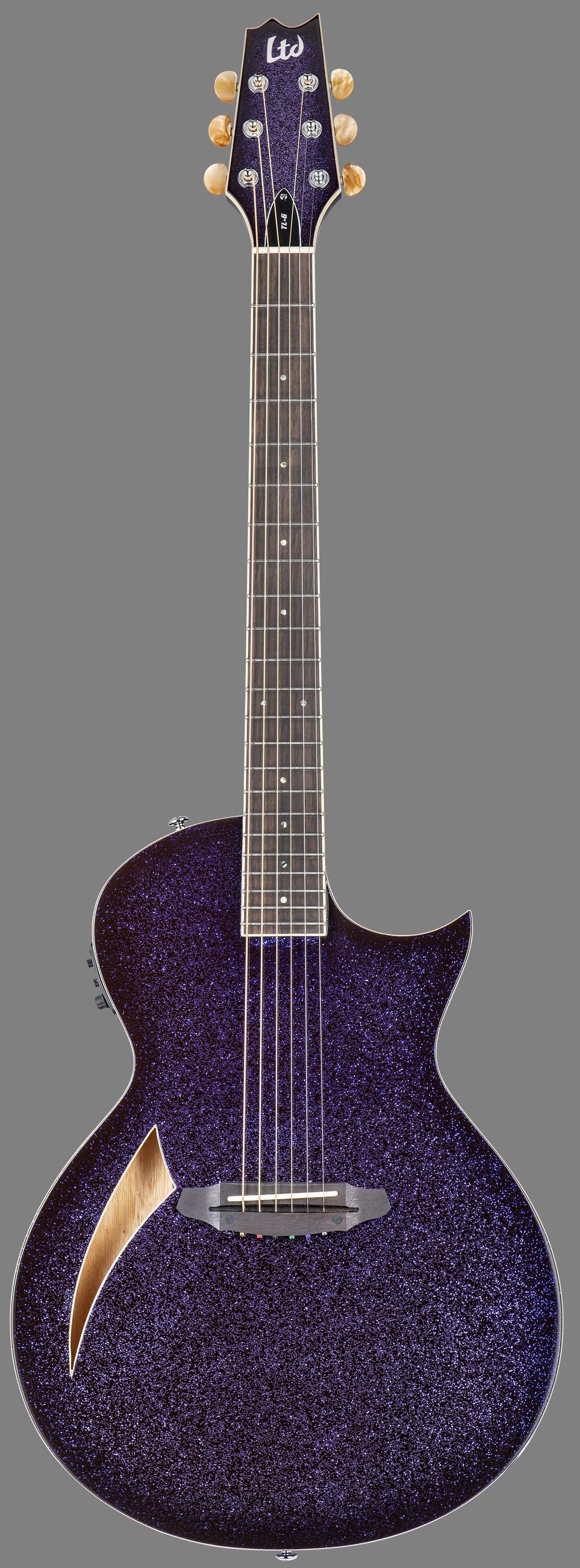
Finally, three new guitars have been added to the Viper Series. The LTD Deluxe Viper-1000 Baritone is a 27” baritone scale guitar with 24 extra-jumbo stainless steel frets, a TonePros locking TOM bridge and tailpiece, and a set of EMG 60TW-R (neck) and EMG 81 (bridge) pickups. The LTD Deluxe Viper-1000 EverTune includes the innovative EverTune constant tension bridge, 24 extra-jumbo stainless steel frets, and a set of EMG 60TW-R (neck) and EMG 81 (bridge) pickups. The LTD Deluxe Viper-1000M offers a mahogany body in See Thru Black Cherry finish, 24 extra-jumbo stainless steel frets, a TonePros locking TOM bridge with string-thru-body, and a set of direct-mount Fishman Open Core Humbucker pickups.
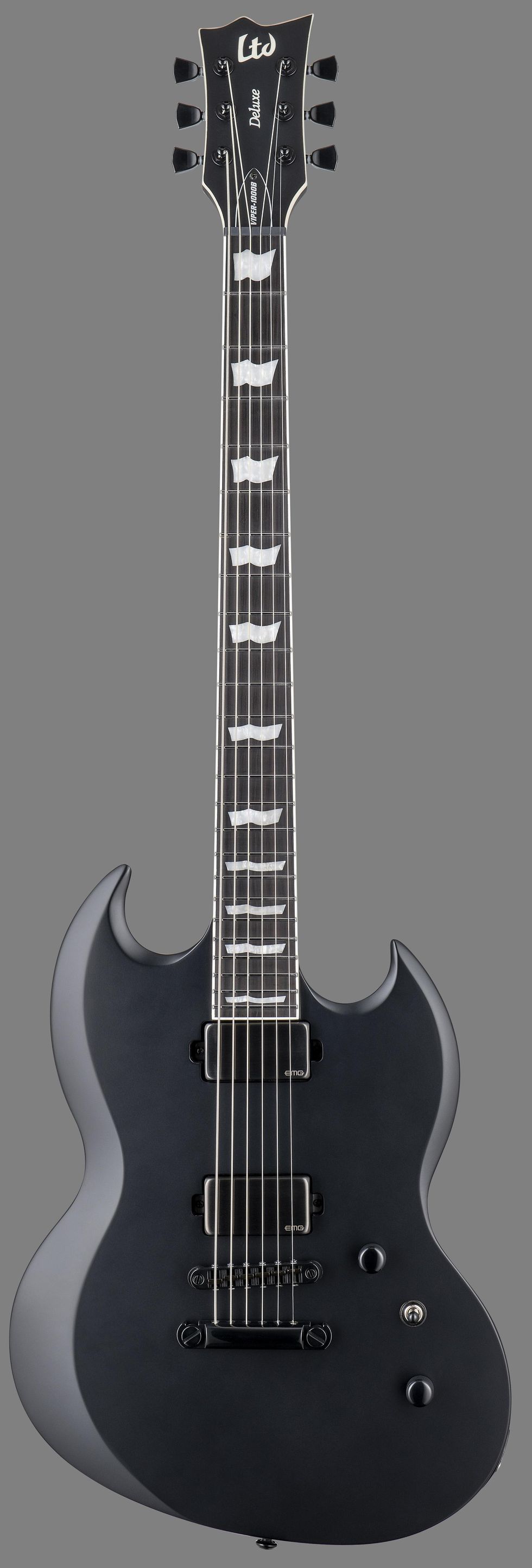
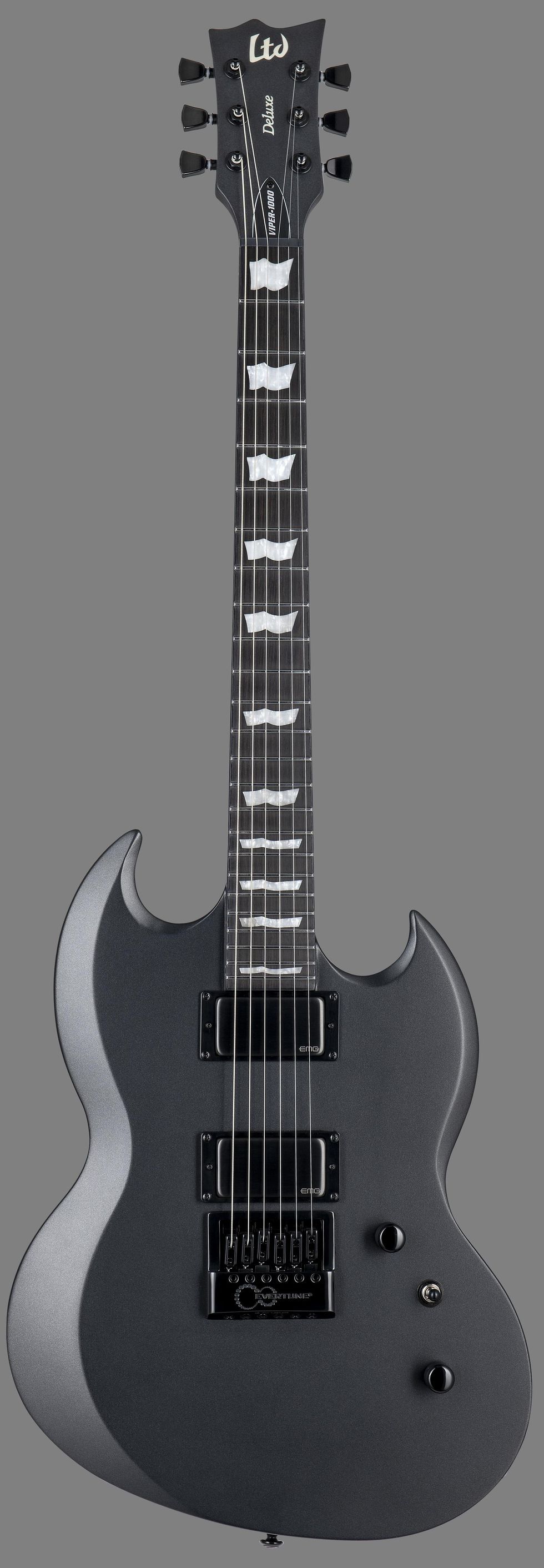
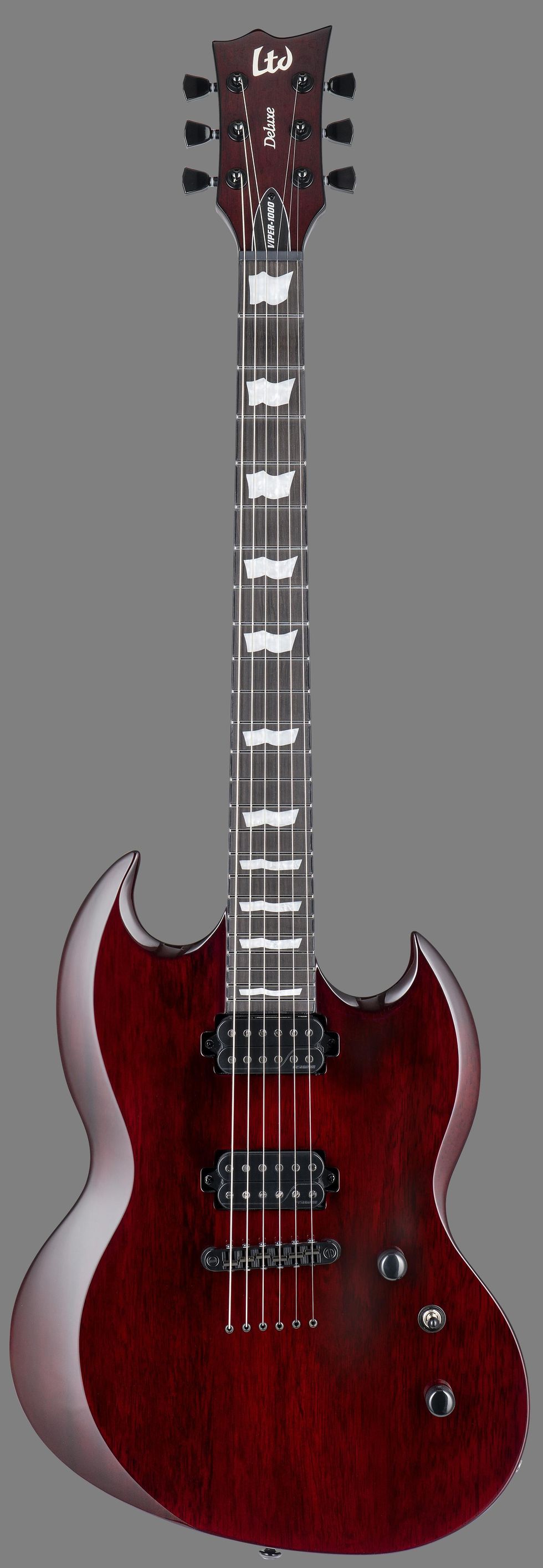
Detailed information and specifications for all “New for 2022” ESP and LTD guitar models is available at the ESP web site at espguitars.com
